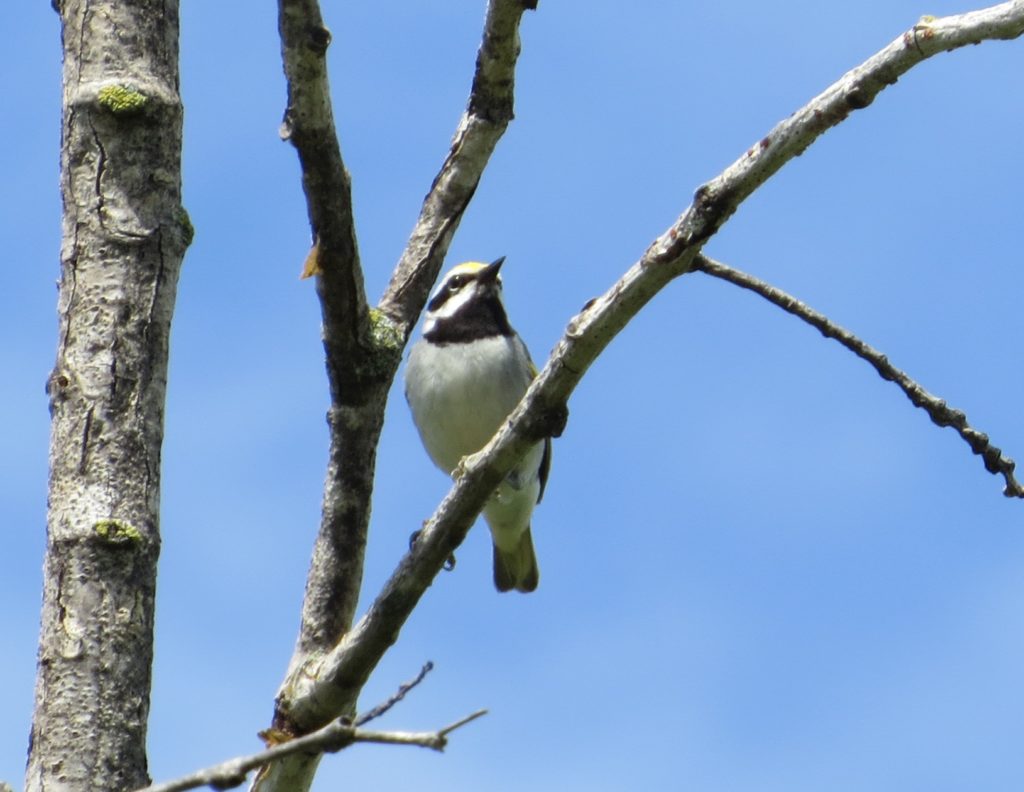Like most Americans, I celebrated the 4th of July weekend with family, doing the typical things like picnicking outside all day, tossing the ball around, and cruising a lake in a boat in search of a good fishing hole. Most people are able to focus on these activities exclusively; birders always have the incidental birding meter running. That’s how you ride in a boat and show your companions a patriotic scene, fitting for the weekend.
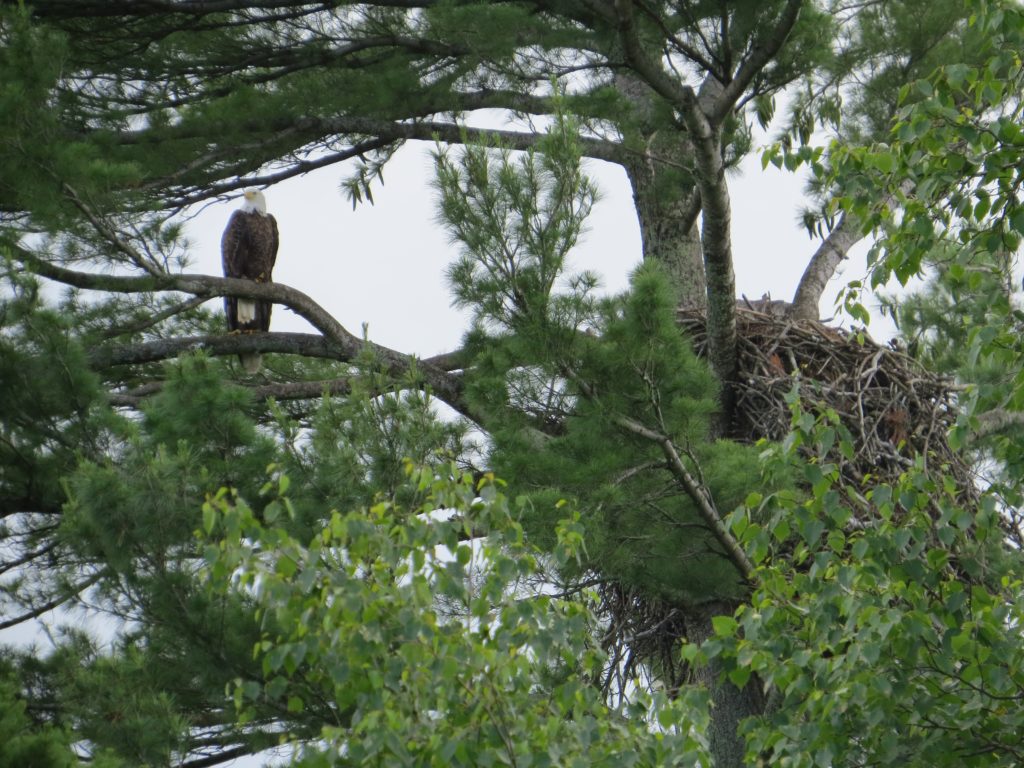 It’s also how you can point out to Grandma during that all-day gathering that the bird that flushes from the house each time someone goes in or out is actually a pretty cool bird and not some lame Robin that none of us can stand to have making a mess on our house.
It’s also how you can point out to Grandma during that all-day gathering that the bird that flushes from the house each time someone goes in or out is actually a pretty cool bird and not some lame Robin that none of us can stand to have making a mess on our house.
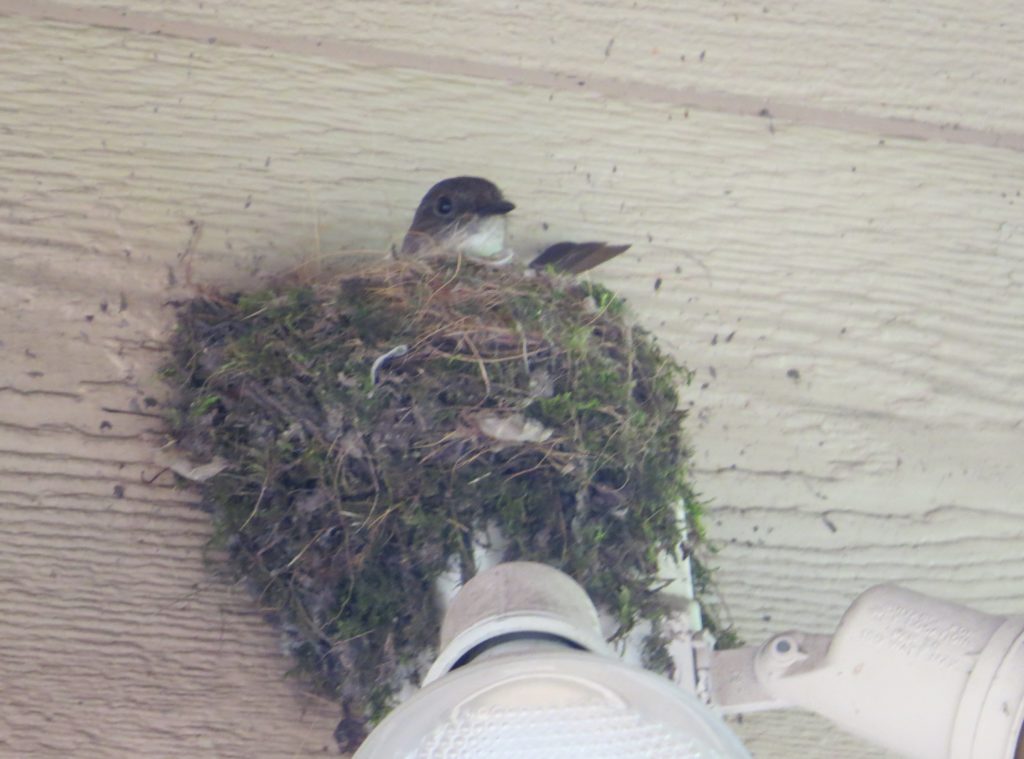 Unlike the Robin, the Eastern Phoebe’s nest is quite aesthetically pleasing and well-constructed.
Unlike the Robin, the Eastern Phoebe’s nest is quite aesthetically pleasing and well-constructed.
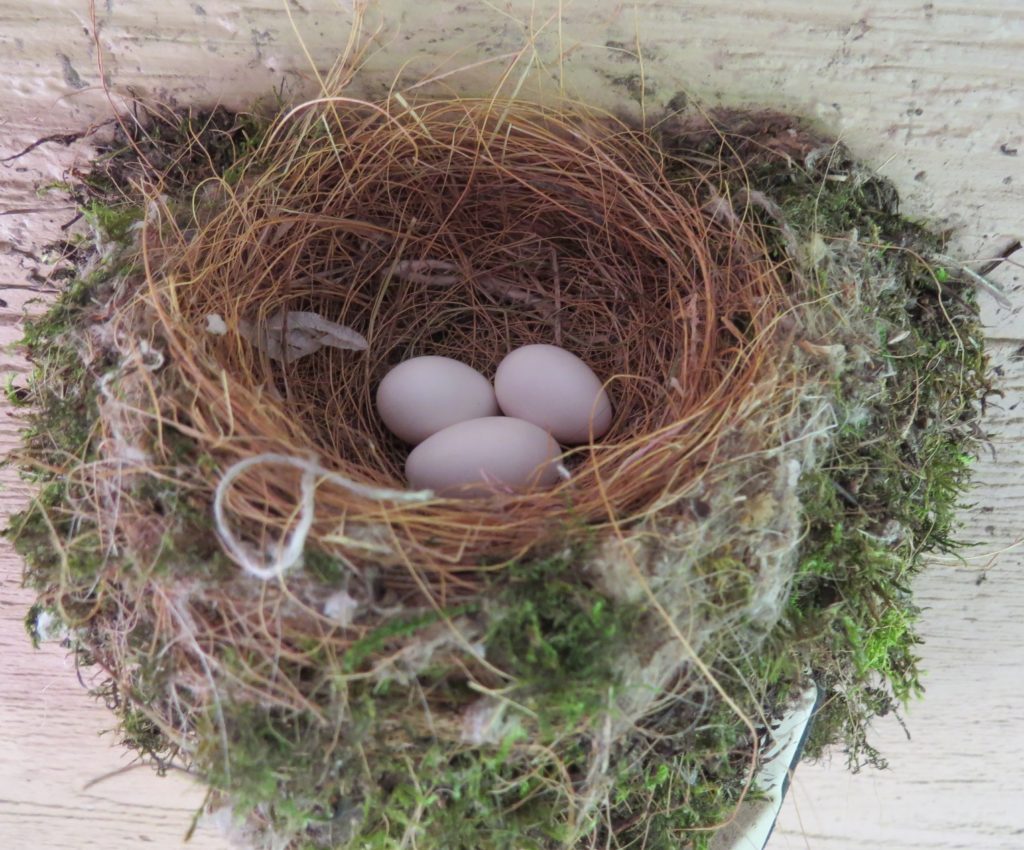 I almost passed on the opportunity to get crushing photos of the most accommodating Eastern Phoebe I’ve ever seen. That would have been a shame.
I almost passed on the opportunity to get crushing photos of the most accommodating Eastern Phoebe I’ve ever seen. That would have been a shame.
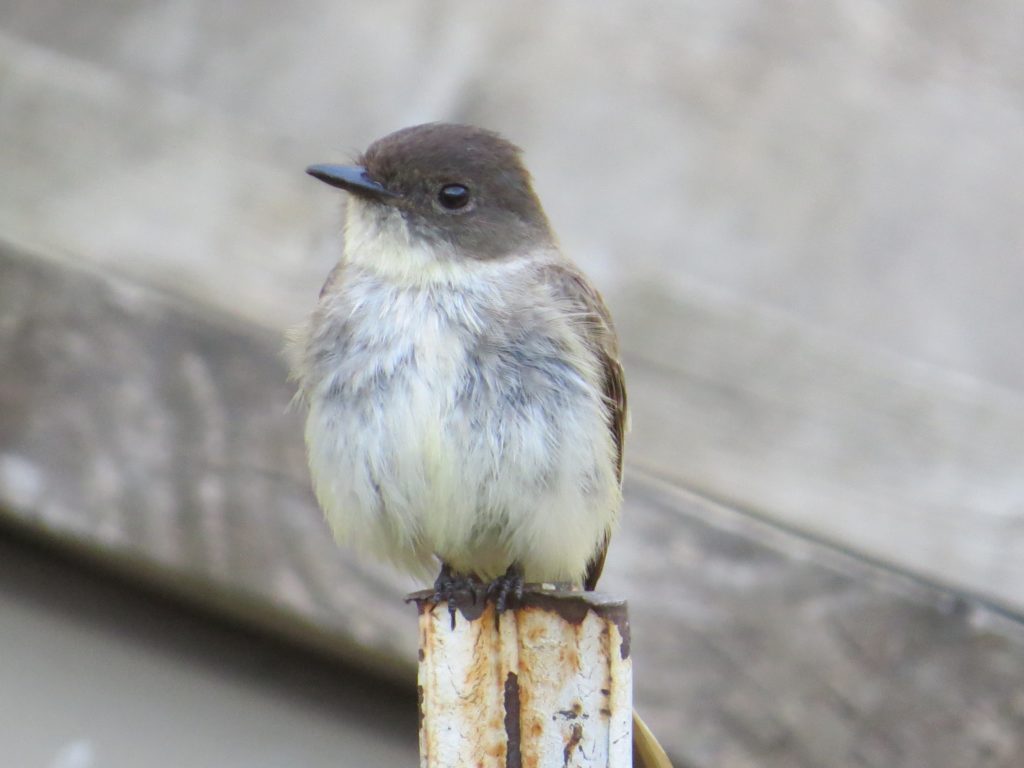
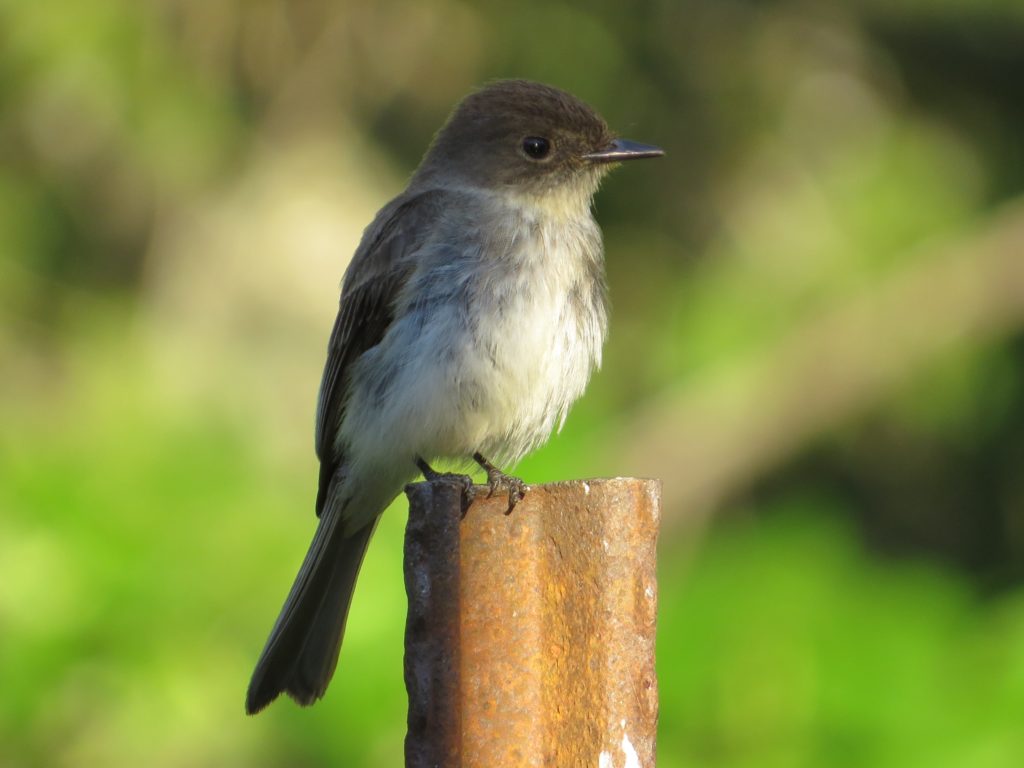 But don’t let me fool you, it wasn’t all incidental birding. I was in northern Minnesota, after all, a land ripe with fascinating birds in all seasons. Local birding friend, Julie, had told me about a Connecticut Warbler she had recently found in a Black Spruce/Tamarack bog not more than 20 minutes from my parents’ house. The Connecticut was a bird I had previously only had as heard-only in the Sax-Zim Bog, so I rose early one morning donning some knee-high rubber boots, long sleeves, long pants, and an unhealthy dousing of bug spray. I was going all in to mosquito central. No sane person does this.
But don’t let me fool you, it wasn’t all incidental birding. I was in northern Minnesota, after all, a land ripe with fascinating birds in all seasons. Local birding friend, Julie, had told me about a Connecticut Warbler she had recently found in a Black Spruce/Tamarack bog not more than 20 minutes from my parents’ house. The Connecticut was a bird I had previously only had as heard-only in the Sax-Zim Bog, so I rose early one morning donning some knee-high rubber boots, long sleeves, long pants, and an unhealthy dousing of bug spray. I was going all in to mosquito central. No sane person does this.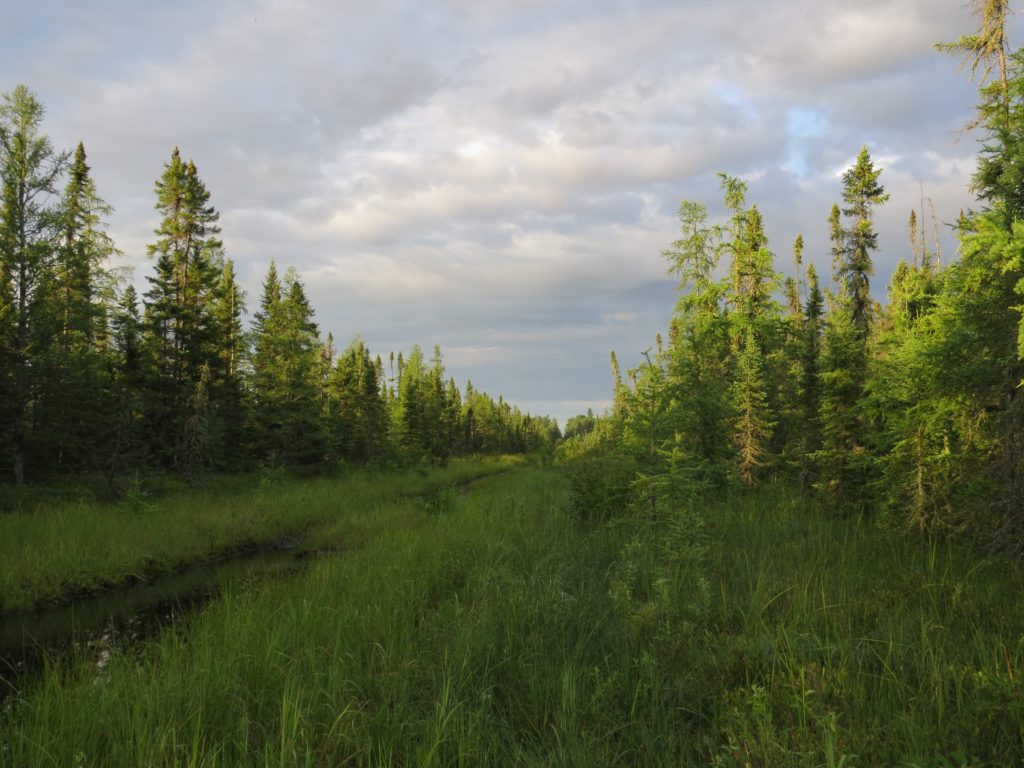 But we die-hard birders do, especially when we think of the possible reward of visuals of a skulker like the Connecticut. It’s worth some welts and the loss of a little sleep. Julie had made things easy for me by marking a tree where the Connecticut had set up a territory along this abandoned, water-logged road pictured above. However, as we are getting into July, the Warblers just don’t sing as much. When I got to the spot after hiking a quarter mile, I didn’t hear it. But patience eventually rewarded me with that clear, ringing sound of the Connecticut: “Bea-cher, bea-cher, bea-cherbeach!” After waiting it out a little longer, I did get some great up-close looks, but I wasn’t quick enough to get a photo. Seeing one was a good improvement on my heard-only lifer, but I really wanted that photo. Maybe this Warbler was busy with a nest because it never did show itself again despite me waiting for an insane amount of time in the cloud of mosquitoes. I finally decided to call it quits and head back to rejoin the family. A heard-only Boreal Chickadee and a Lincoln’s Sparrow were a couple of good birds on the hike out.
But we die-hard birders do, especially when we think of the possible reward of visuals of a skulker like the Connecticut. It’s worth some welts and the loss of a little sleep. Julie had made things easy for me by marking a tree where the Connecticut had set up a territory along this abandoned, water-logged road pictured above. However, as we are getting into July, the Warblers just don’t sing as much. When I got to the spot after hiking a quarter mile, I didn’t hear it. But patience eventually rewarded me with that clear, ringing sound of the Connecticut: “Bea-cher, bea-cher, bea-cherbeach!” After waiting it out a little longer, I did get some great up-close looks, but I wasn’t quick enough to get a photo. Seeing one was a good improvement on my heard-only lifer, but I really wanted that photo. Maybe this Warbler was busy with a nest because it never did show itself again despite me waiting for an insane amount of time in the cloud of mosquitoes. I finally decided to call it quits and head back to rejoin the family. A heard-only Boreal Chickadee and a Lincoln’s Sparrow were a couple of good birds on the hike out.
The next day on our final morning in the northwoods, I decided to give Julie’s spot one more try. That Connecticut photo seemed in reach; like with the Phoebe, it would be foolish to pass on the opportunity to try. Thanks to a late night fireworks show, I was a little slower getting out of bed that next morning. In fact, I arrived at the trail a full 40 minutes later than the day before. Considering I had heard the bird right away that day and that it was singing sporadically, I didn’t like my chances for a repeat on the visual I got. When I got there and opened the car door, though, I didn’t hear the Connecticut but instead heard something just as cool–the unmistakable drumming of a Black-backed Woodpecker! And like that my search priorities shifted. I followed the sound of the steady drumming which echoed through the bog. And there, there he was just 10 feet off the waterlogged road about 10 feet up. I was blown away.
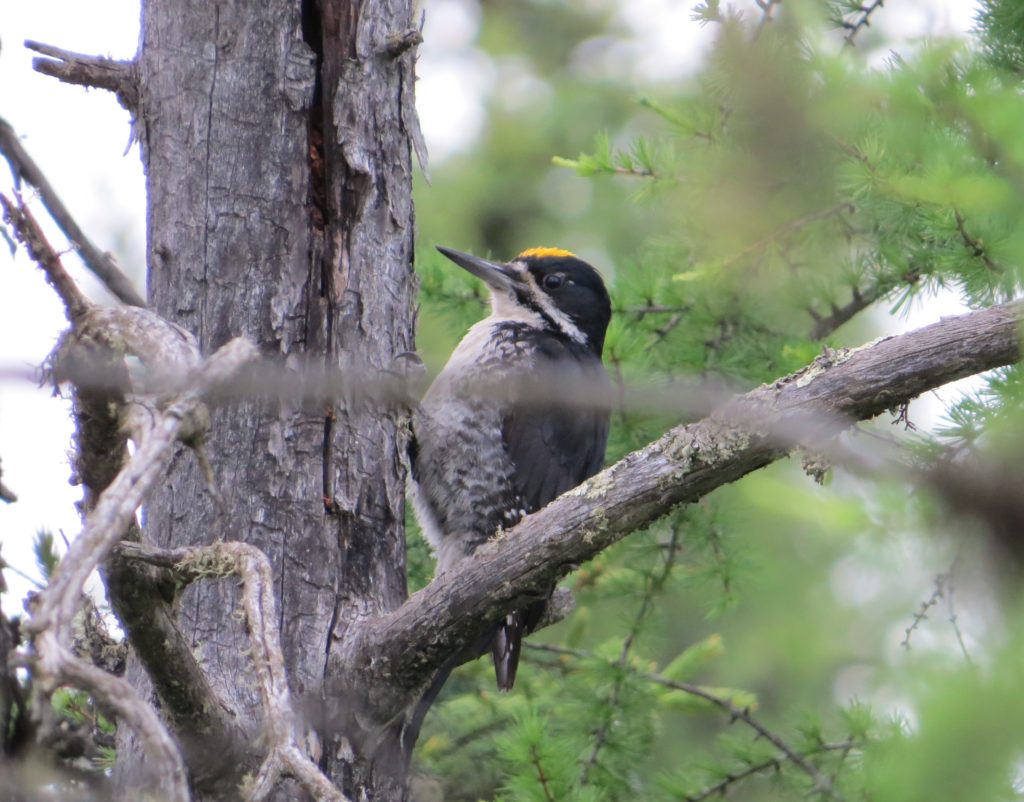
The Black-backed was not a lifer, but I have never seen a male before with his bright yellow crown and have always wanted to. In a sense this felt just as fresh as a lifer. So I set out to accomplish one goal (photo of the COWA) and inadvertently and delightfully accomplished another.
I spent a lot of time enjoying this Woodpecker all while keeping an ear open for the Connecticut which did not vocalize even once. 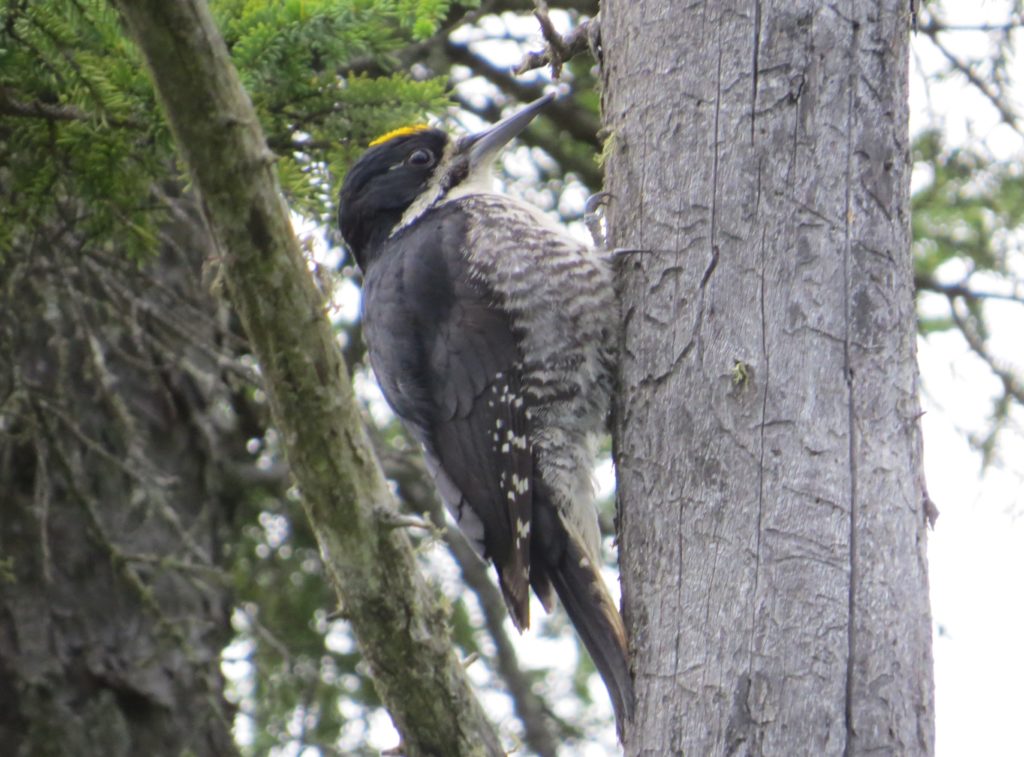 Here you can see and hear that distinctive drumming. It’s such a cool sound.
Here you can see and hear that distinctive drumming. It’s such a cool sound.
I’ve heard that Black-backed Woodpeckers are quite tame and don’t really care about a person’s presence. This experience certainly seemed to back that theory up. And if you have doubts about whether this bird was appropriately named…
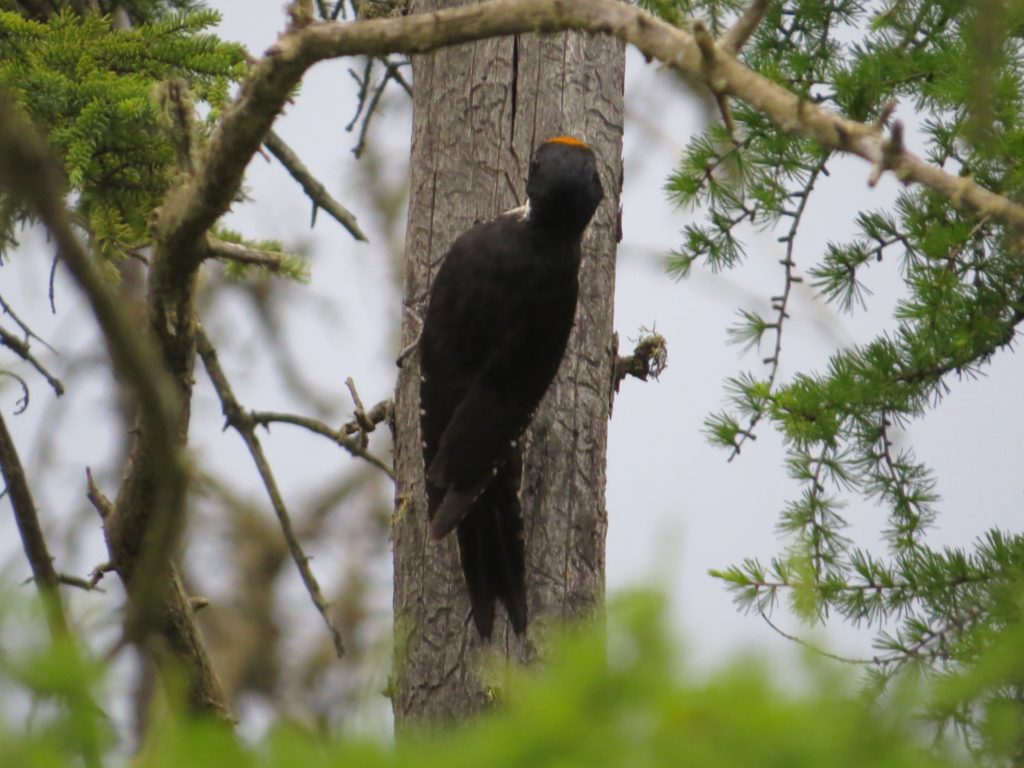
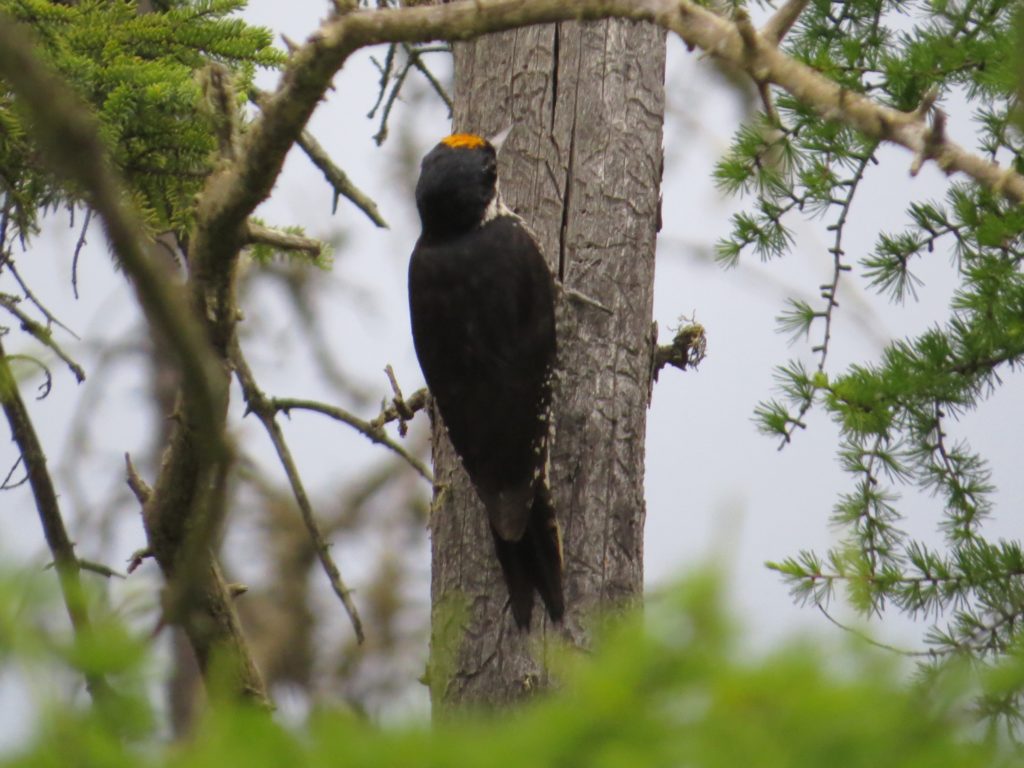
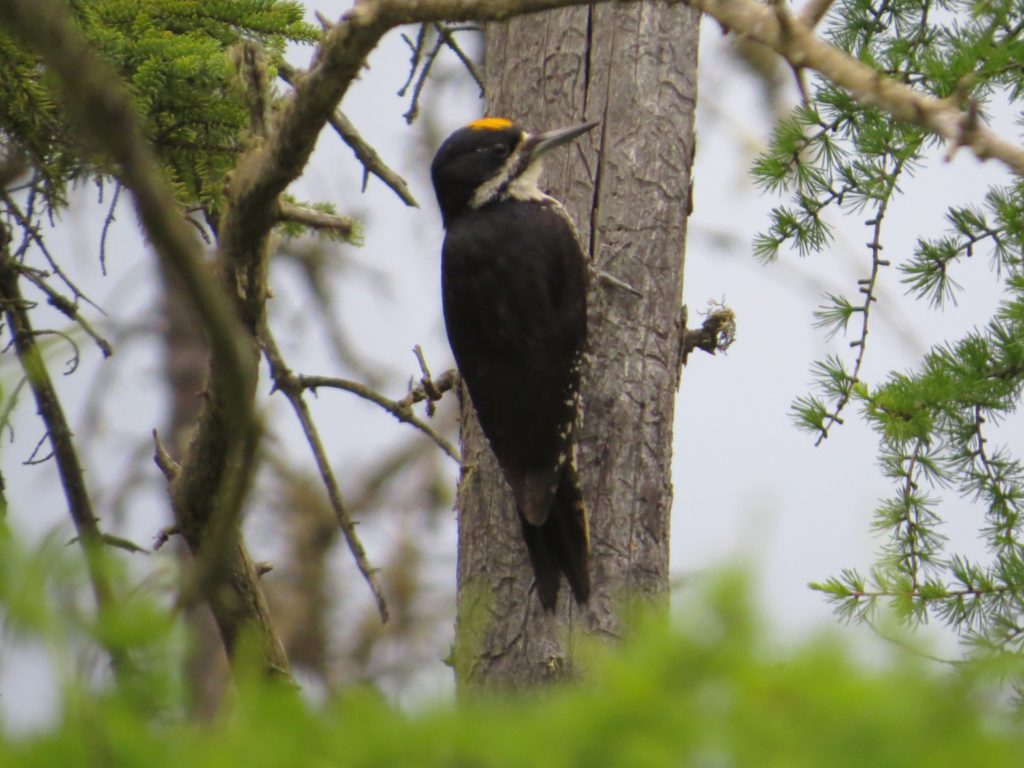
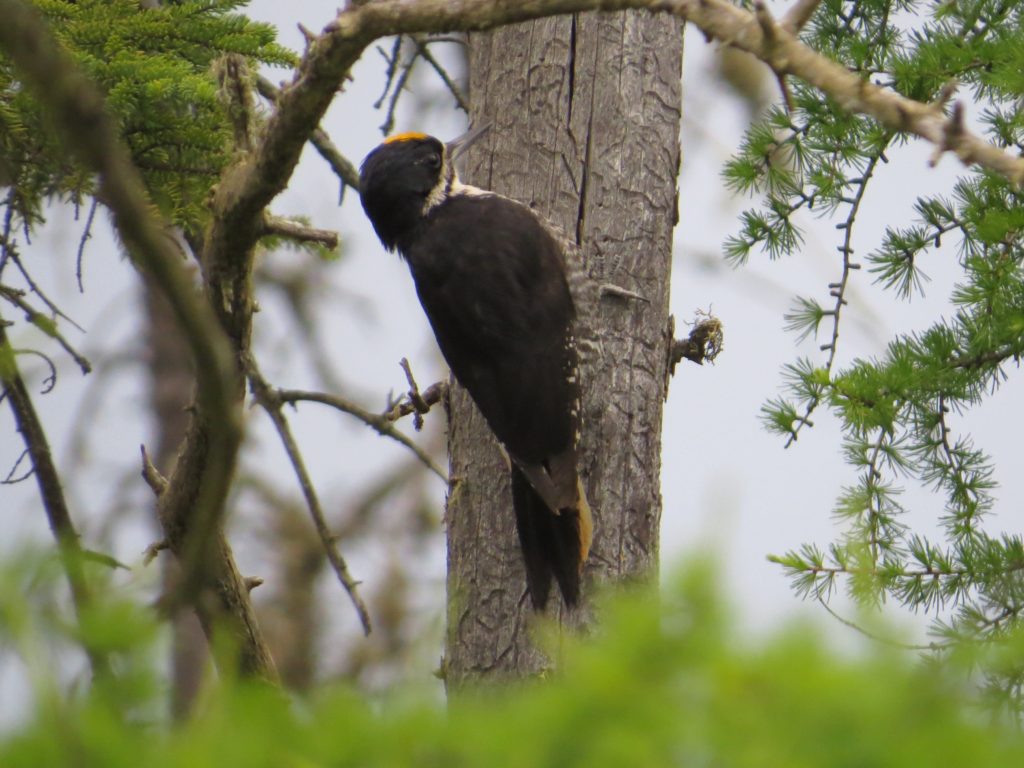
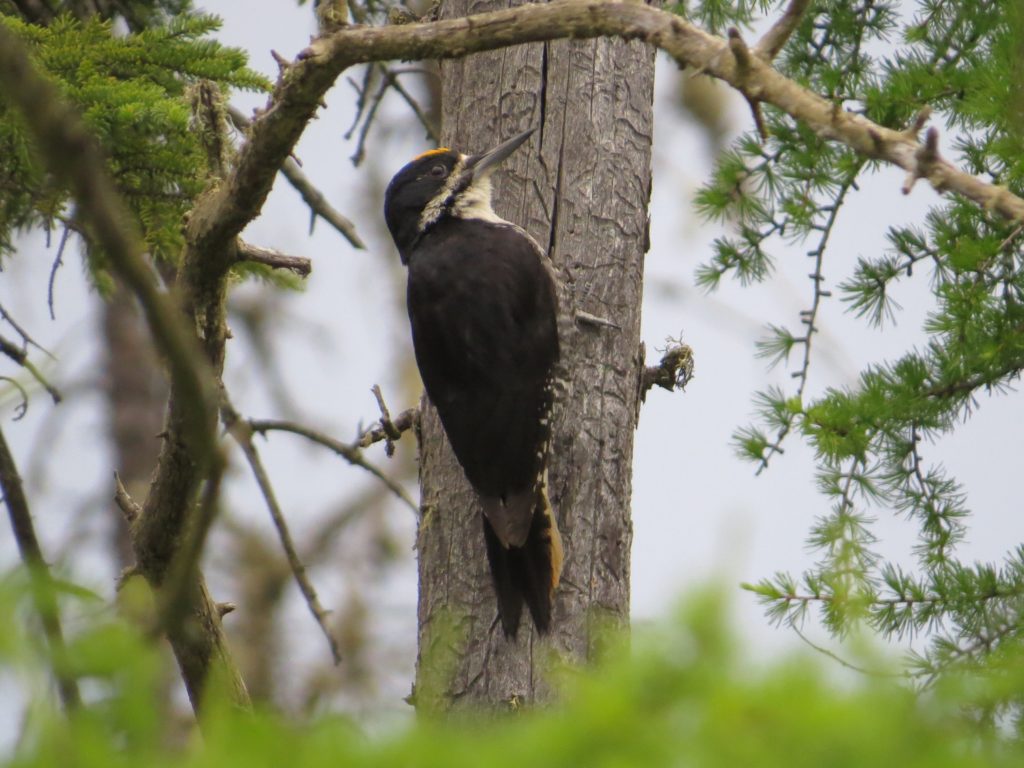 Here’s another video. I was hoping to capture him drumming some more, but instead caught him itching himself. Mosquito bite?
Here’s another video. I was hoping to capture him drumming some more, but instead caught him itching himself. Mosquito bite?
Eventually the bird went on its way, and so did I, trying to dig up that Connecticut. I finally called it quits on the Warbler, vowing to try again next year when it was earlier in the breeding season and the birds’ hormones are still raging causing them to be more vocal. On my way back to the car I again spotted the Black-backed Woodpecker, but I noticed something different–no yellow crown, a female!
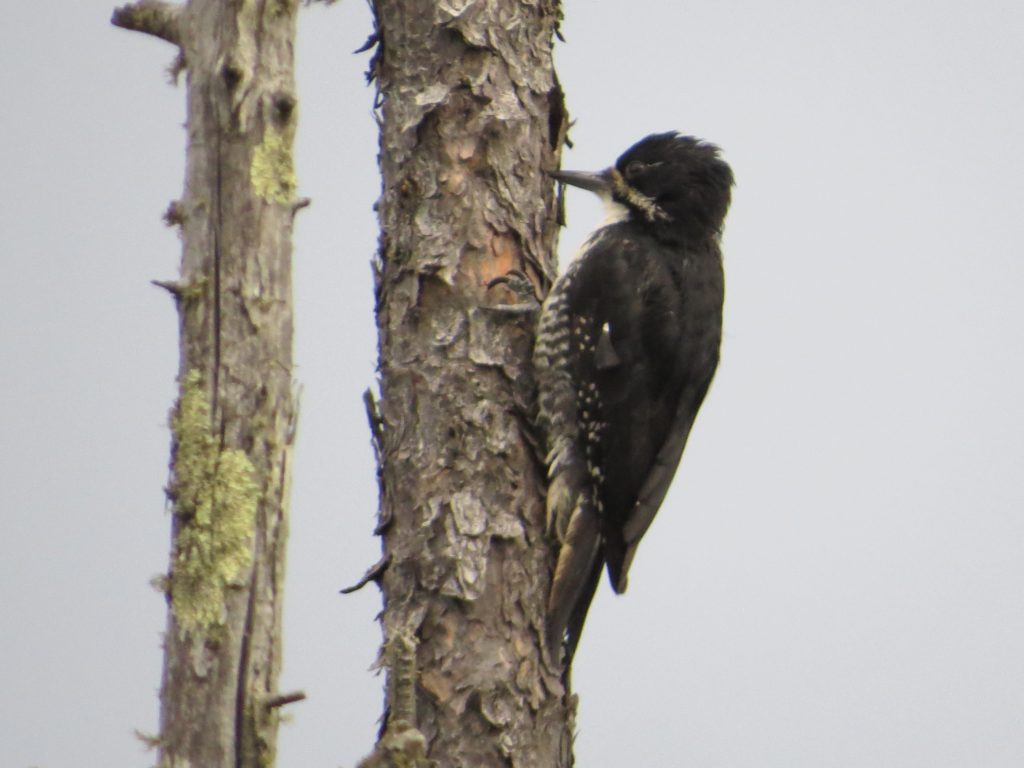 Thrilled with the bonus Woodpecker, I continued my waterlogged hike back to the car. Then I again heard a Black-backed Woodpecker a couple hundred yards from the first two, and then I saw one of them following the other around. I thought they must be those two that I saw earlier. I glassed the two birds as one followed the other up a Spruce and was shocked to see that both were males–an adult being followed by this juvenile!
Thrilled with the bonus Woodpecker, I continued my waterlogged hike back to the car. Then I again heard a Black-backed Woodpecker a couple hundred yards from the first two, and then I saw one of them following the other around. I thought they must be those two that I saw earlier. I glassed the two birds as one followed the other up a Spruce and was shocked to see that both were males–an adult being followed by this juvenile!
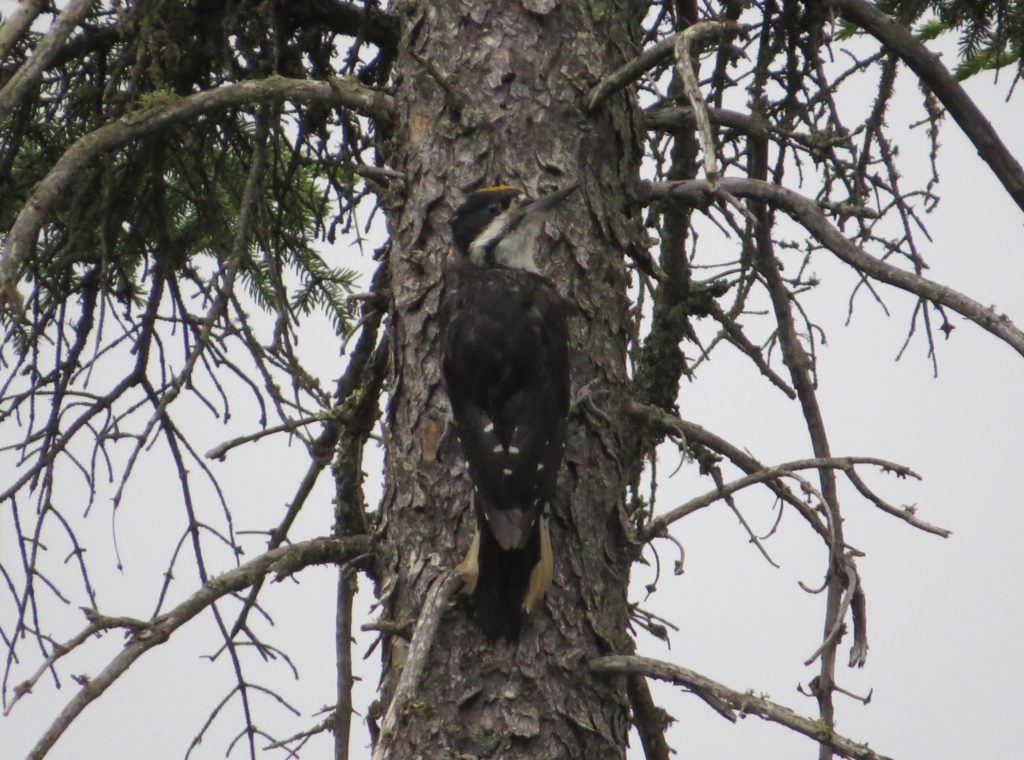
This meant I had for sure seen three different Black-backed Woodpeckers and maybe four if the second adult male was a different bird than the first. It’s not everyday you see a Black-backed Woodpecker, let alone a small pile of them. Additionally, seeing a good northern bird like this outside of a birding mecca like the Sax-Zim Bog and close to “home” is always a huge thrill for me. This encounter did not go unappreciated by me and will likely be one of my all-time birding highlights.

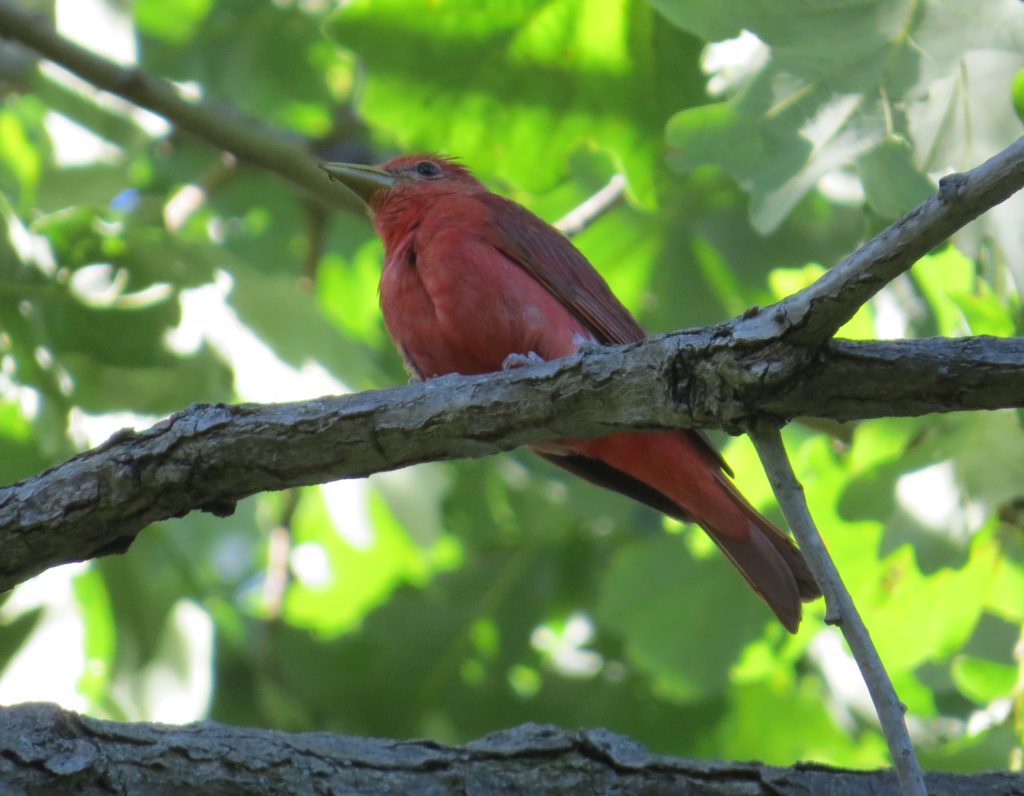 One of the most popular birds in Minnesota this summer has been the Summer Tanager discovered by Wilmer Fernandez at the University of Minnesota’s Landscape Arboretum in Chanhassen. Summer Tanager is rare-regular in the state, but the fact that this bachelor bird was in the Twin Cities and singing endlessly on territory made it all the rage for the better part of a week. Not even the Arboretum’s steep per person entry fee could keep birders away, including yours truly.
One of the most popular birds in Minnesota this summer has been the Summer Tanager discovered by Wilmer Fernandez at the University of Minnesota’s Landscape Arboretum in Chanhassen. Summer Tanager is rare-regular in the state, but the fact that this bachelor bird was in the Twin Cities and singing endlessly on territory made it all the rage for the better part of a week. Not even the Arboretum’s steep per person entry fee could keep birders away, including yours truly.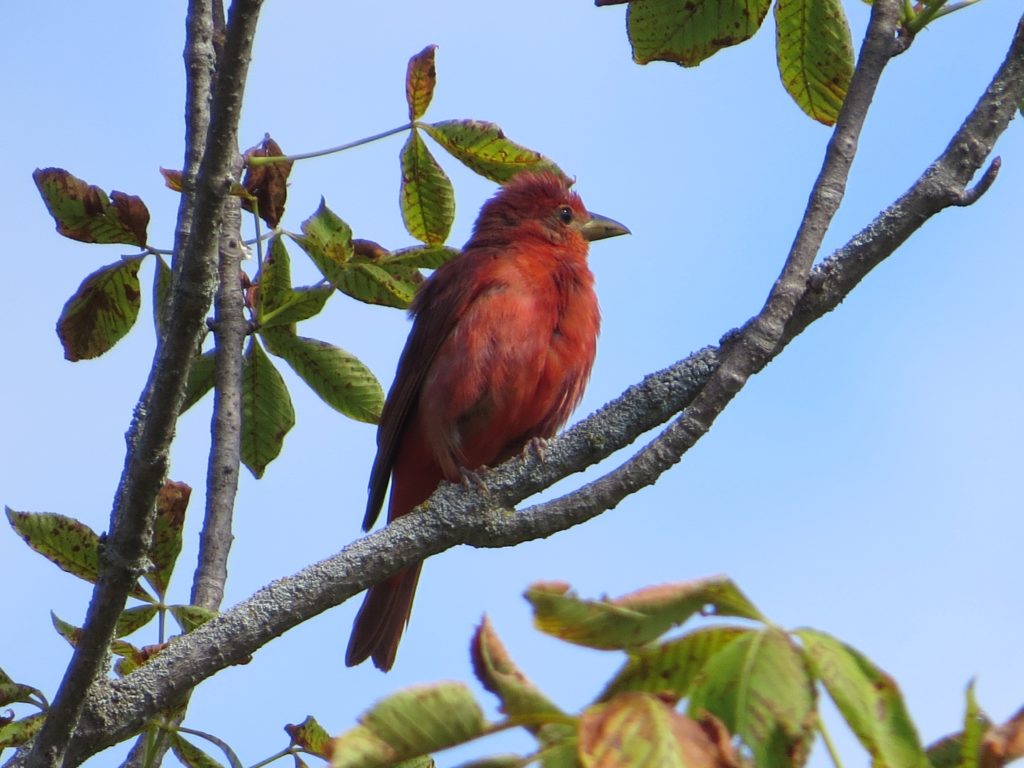 If you’ve been following ABWCH this past spring, you may recall that I already made a Summer Tanager chase to get my lifer. So why did I go after another if I’m not a county lister? Two reasons: this bird was solid red, unlike that tye-died creature I saw earlier this year, and this bird was singing on territory. I wanted the full SUTA experience. That quick migrant sighting didn’t fill the void. Plus this bird was relatively close to home, and I had the time off.
If you’ve been following ABWCH this past spring, you may recall that I already made a Summer Tanager chase to get my lifer. So why did I go after another if I’m not a county lister? Two reasons: this bird was solid red, unlike that tye-died creature I saw earlier this year, and this bird was singing on territory. I wanted the full SUTA experience. That quick migrant sighting didn’t fill the void. Plus this bird was relatively close to home, and I had the time off.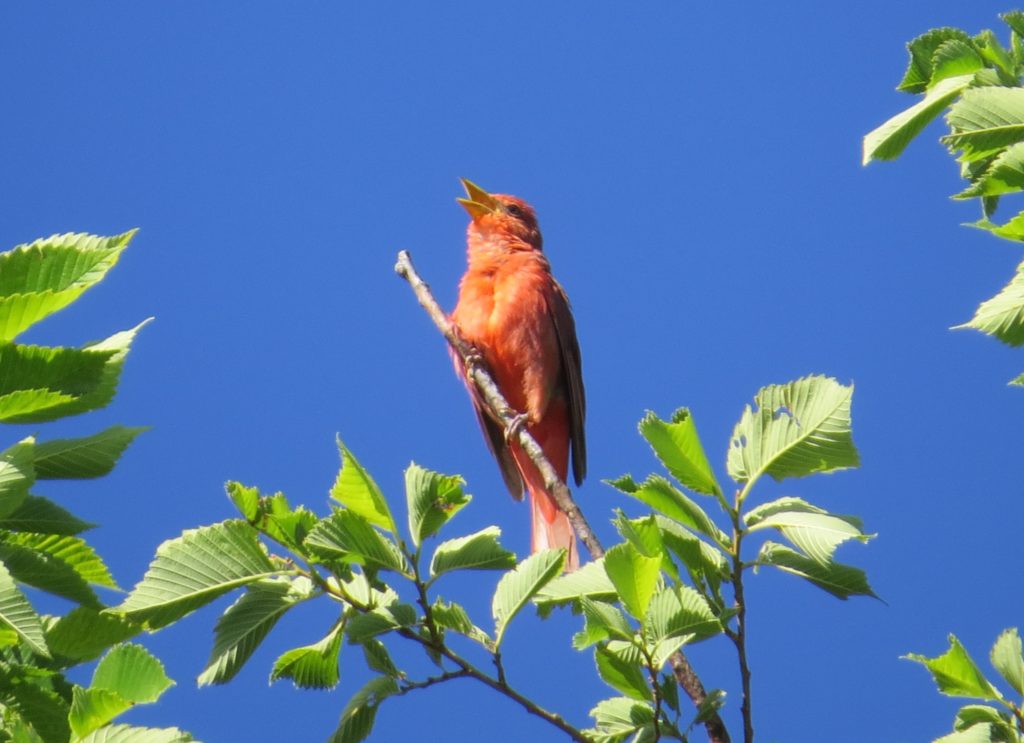 A couple of others who had the time off were teaching colleagues Brad Nelson and Theresa Nelson. The mother-son Nelson duo joined me on this little excursion. Our semi-annual birding get-togethers are always productive and fun–the last time the three of us met up was over a Snowy Owl near one of the towns in our district. Just like we had no problem getting that Owl, seeing this Tanager was a piece of cake. We could hear it singing immediately once we got out of the car at the nut trees section of the Arboretum where it apparently has set up shop for the season. We spent the better part of an hour following it around as it sang endlessly from its various perches, not even stopping its song while it feasted on insects:
A couple of others who had the time off were teaching colleagues Brad Nelson and Theresa Nelson. The mother-son Nelson duo joined me on this little excursion. Our semi-annual birding get-togethers are always productive and fun–the last time the three of us met up was over a Snowy Owl near one of the towns in our district. Just like we had no problem getting that Owl, seeing this Tanager was a piece of cake. We could hear it singing immediately once we got out of the car at the nut trees section of the Arboretum where it apparently has set up shop for the season. We spent the better part of an hour following it around as it sang endlessly from its various perches, not even stopping its song while it feasted on insects: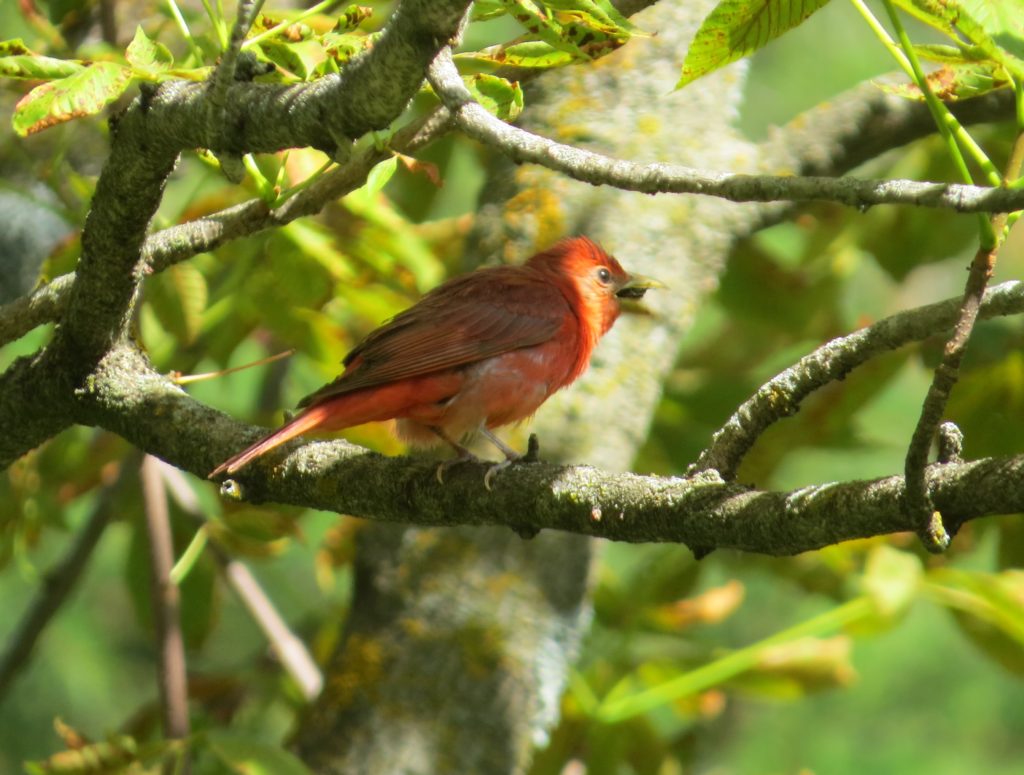
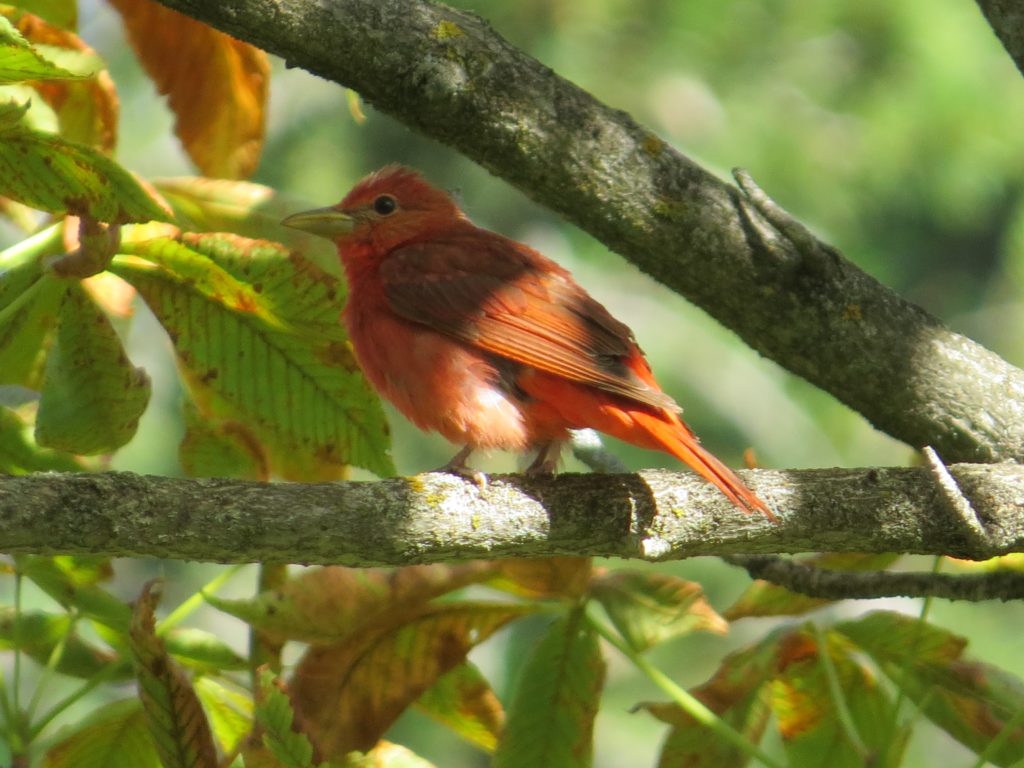 It’s been the year of the Tanager here in MN. To close out this post, here’s a pic of each of the two rare-regular Tanagers and a brand new Scarlet Tanager all seen in state this year. Sorry for turning the Scarlet into a trash bird on this blog. No, I’m not–they are still an exciting bird and this post celebrates all things Tanager.
It’s been the year of the Tanager here in MN. To close out this post, here’s a pic of each of the two rare-regular Tanagers and a brand new Scarlet Tanager all seen in state this year. Sorry for turning the Scarlet into a trash bird on this blog. No, I’m not–they are still an exciting bird and this post celebrates all things Tanager.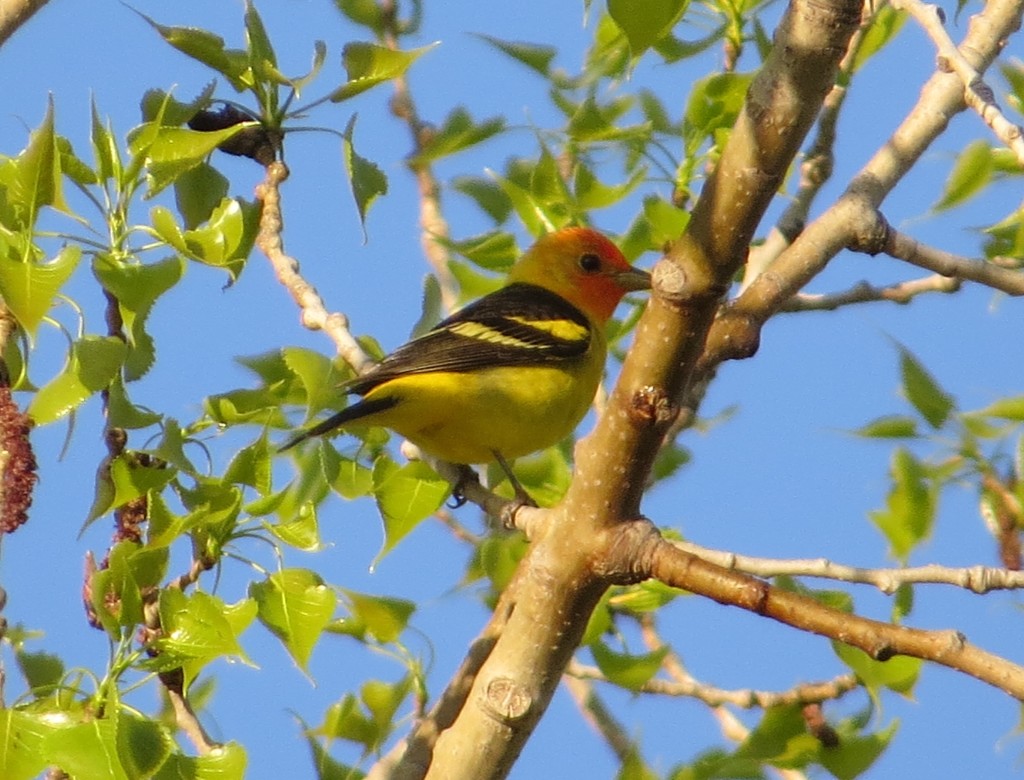
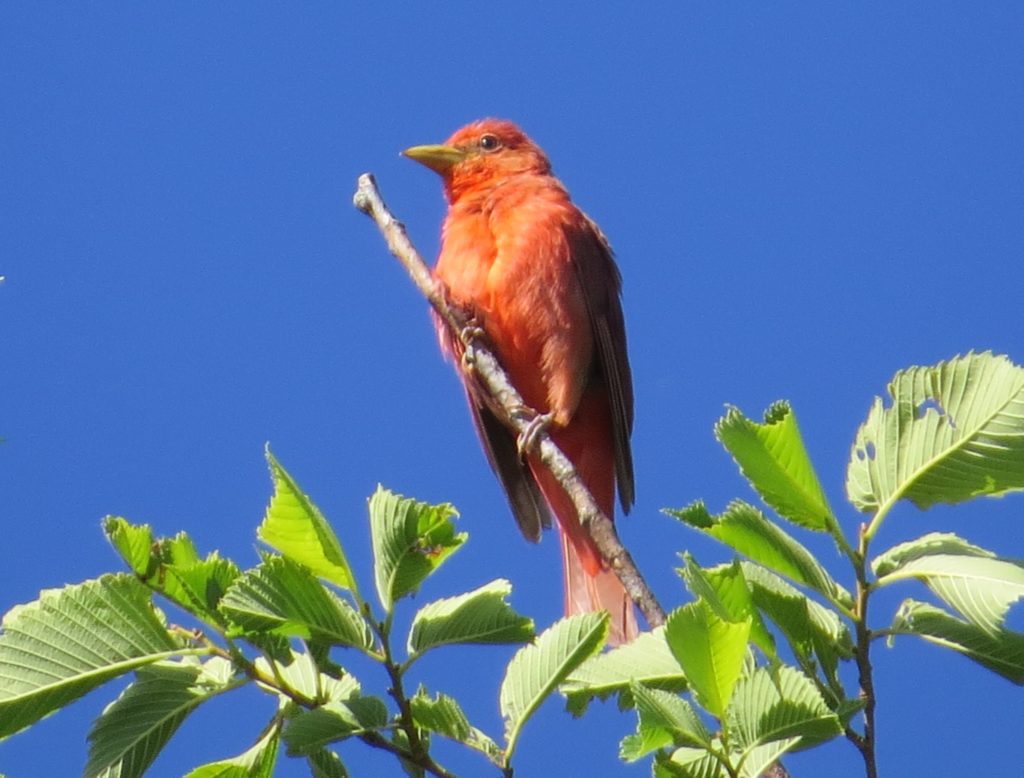
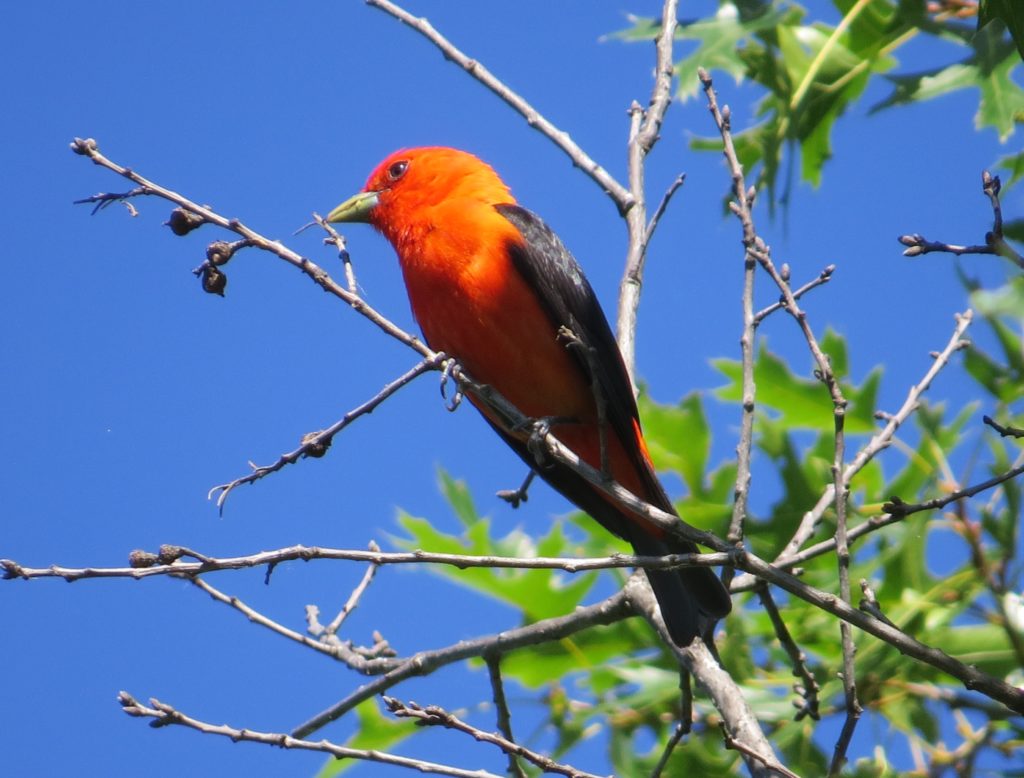
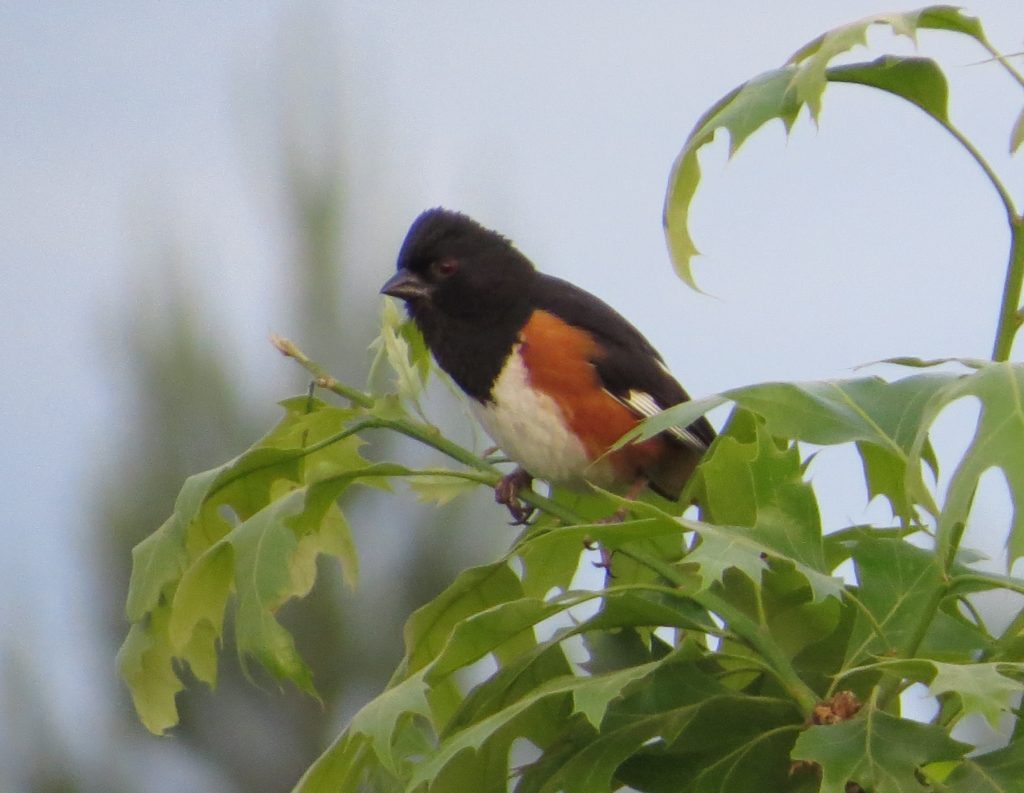
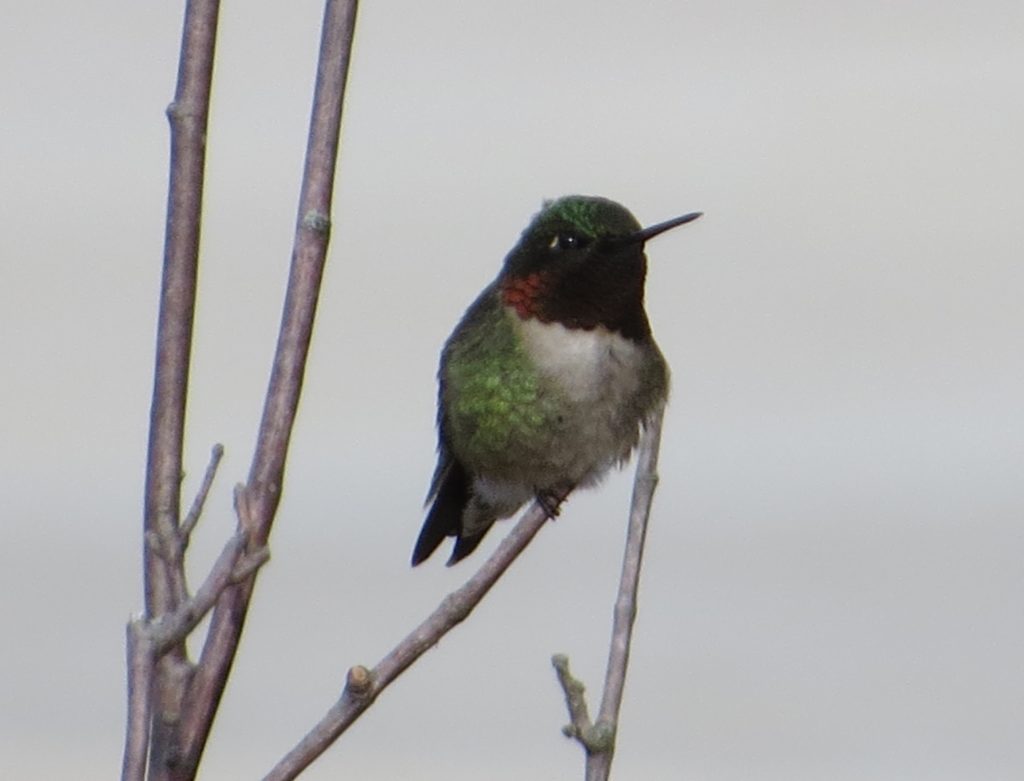
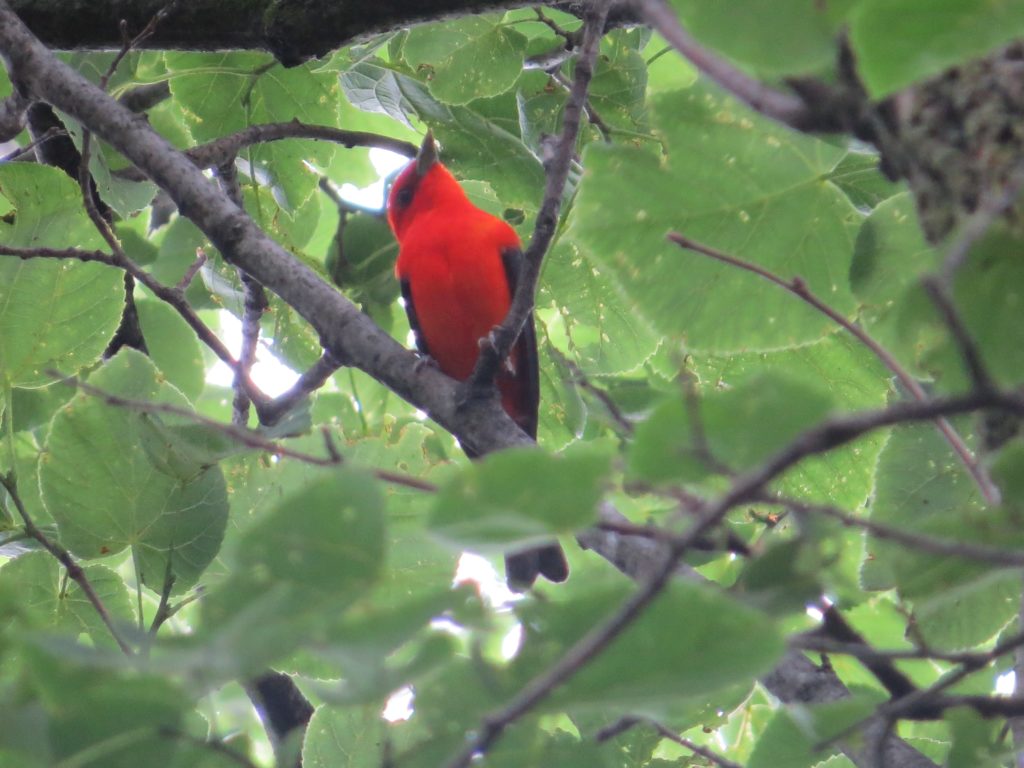 The other highlight was when Tommy picked out the sound of a calling Yellow-billed Cuckoo, a county bird for me! Once again, Tommy gives back! So in three successive days, this bird went from life bird to state bird to county bird. But it still was a no show. Someday.
The other highlight was when Tommy picked out the sound of a calling Yellow-billed Cuckoo, a county bird for me! Once again, Tommy gives back! So in three successive days, this bird went from life bird to state bird to county bird. But it still was a no show. Someday.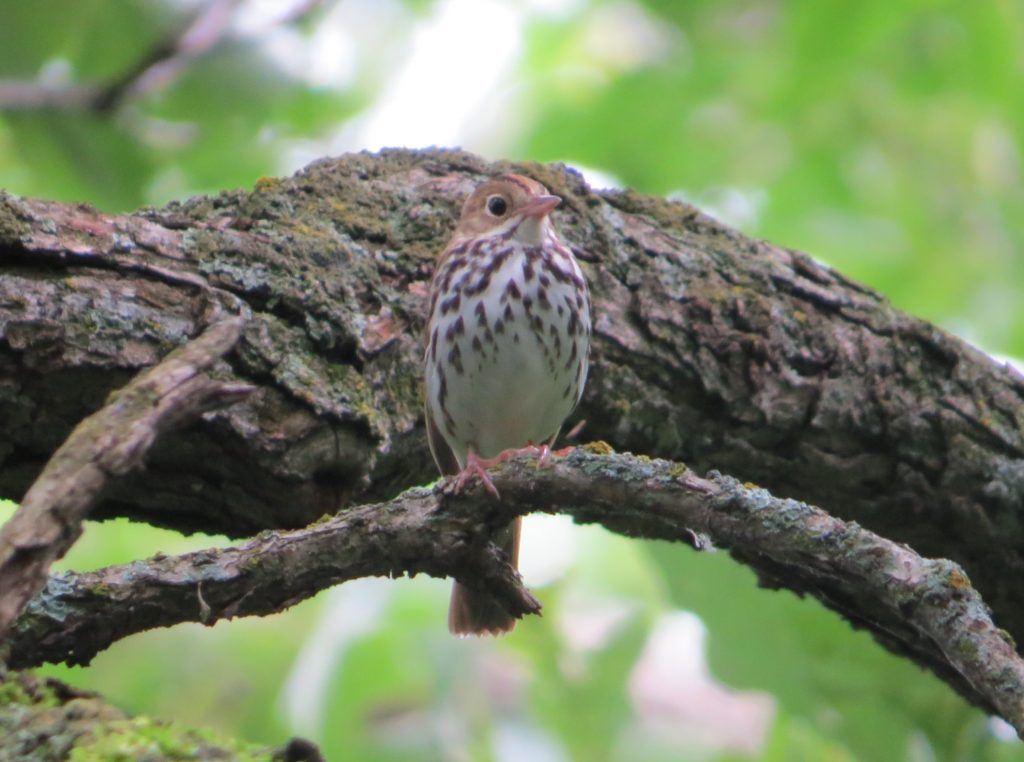
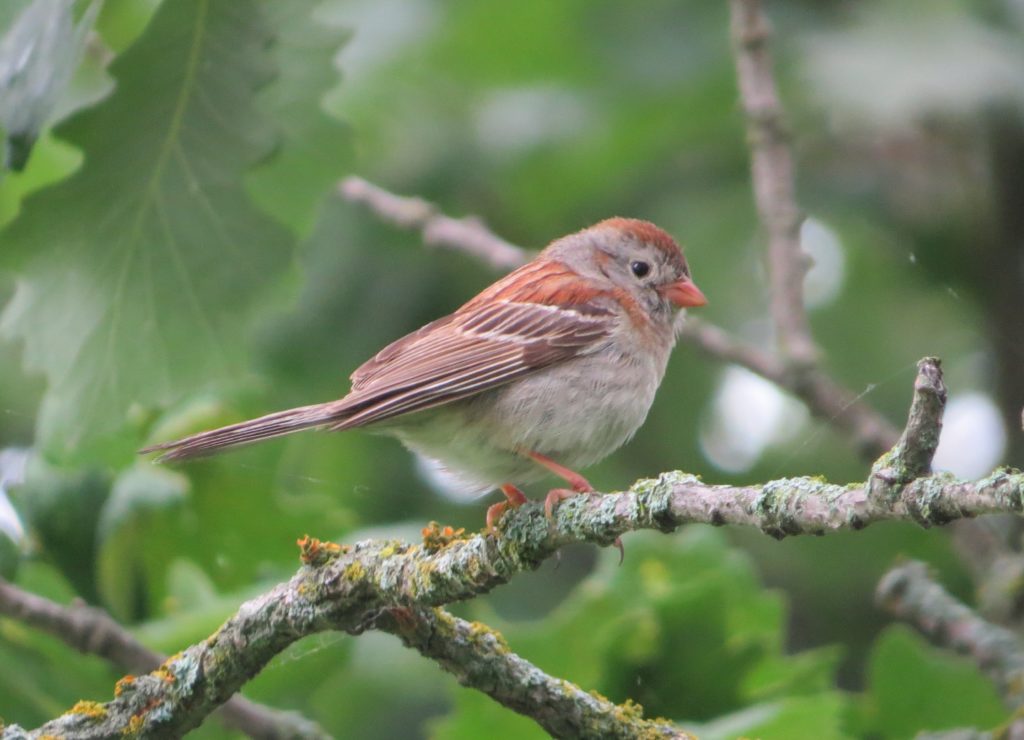
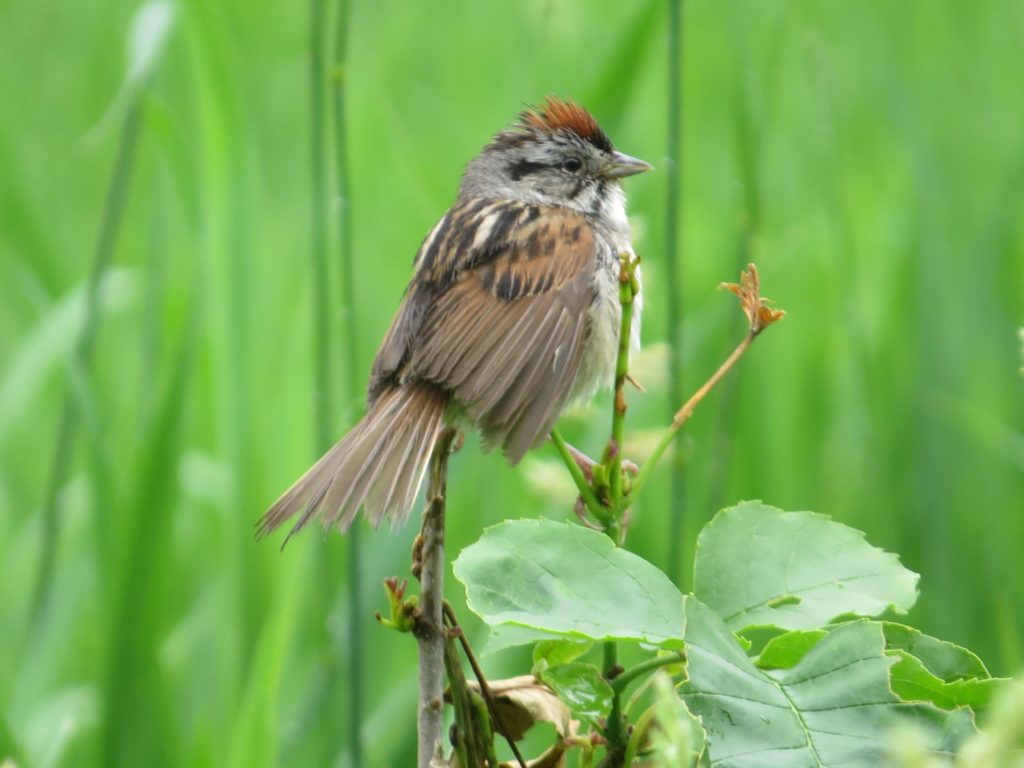
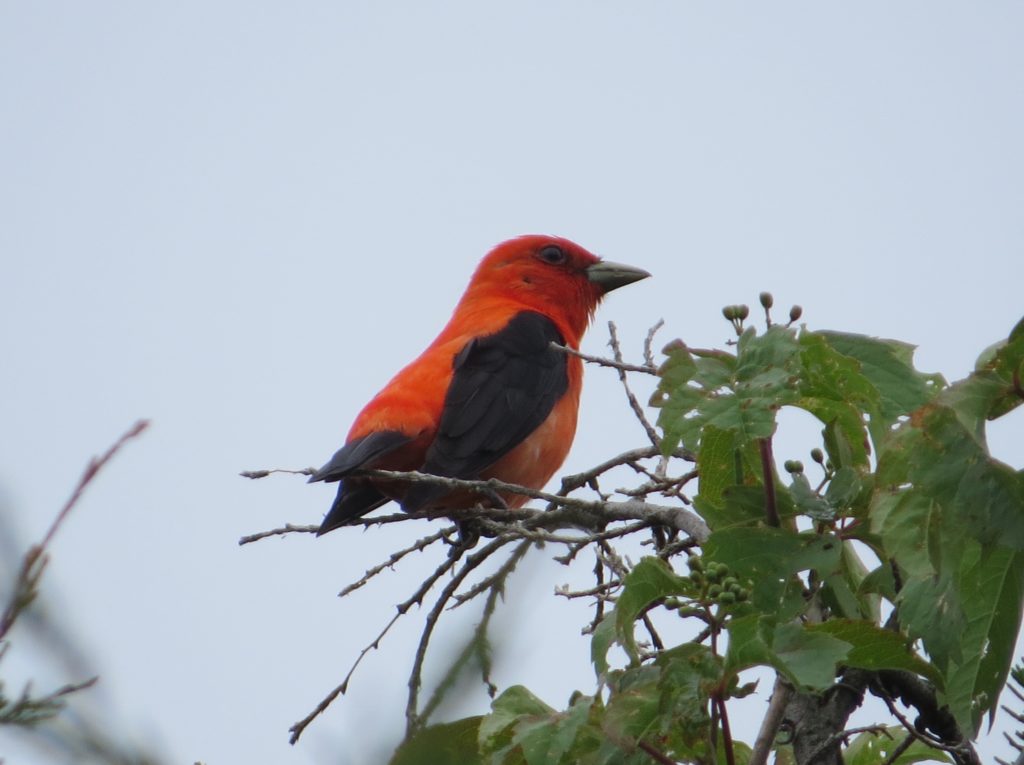 …and two Blue-winged Warblers, a very good bird for central Minnesota.
…and two Blue-winged Warblers, a very good bird for central Minnesota.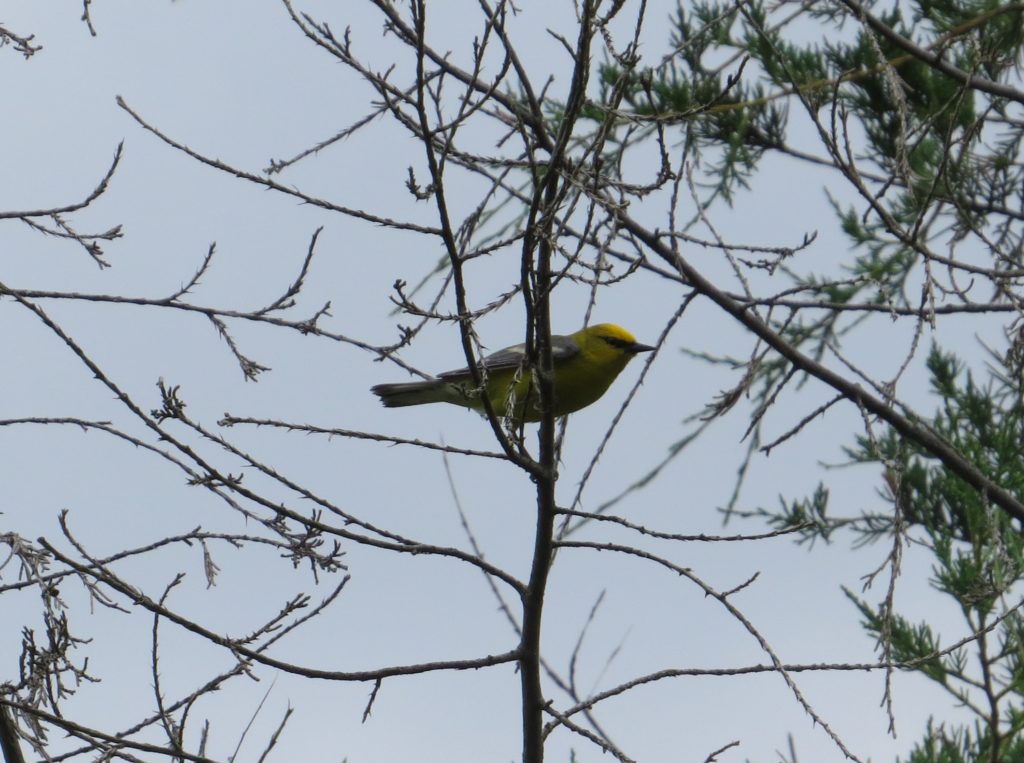
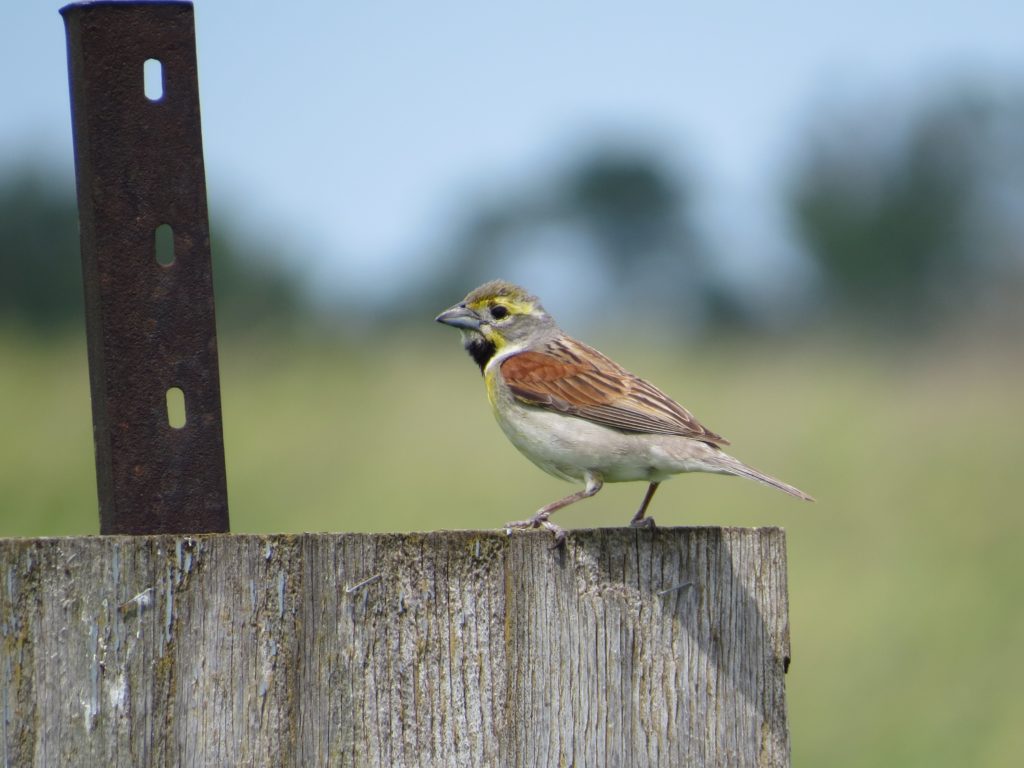 Another fun find I had one evening when I went out to a local wildlife management area was a completely unexpected county Least Bittern. Though I had a killer look at one flying toward me, I wasn’t able to get any photos but did record two Least Bitterns giving their “chuckling” call. You may have to turn up the volume.
Another fun find I had one evening when I went out to a local wildlife management area was a completely unexpected county Least Bittern. Though I had a killer look at one flying toward me, I wasn’t able to get any photos but did record two Least Bitterns giving their “chuckling” call. You may have to turn up the volume.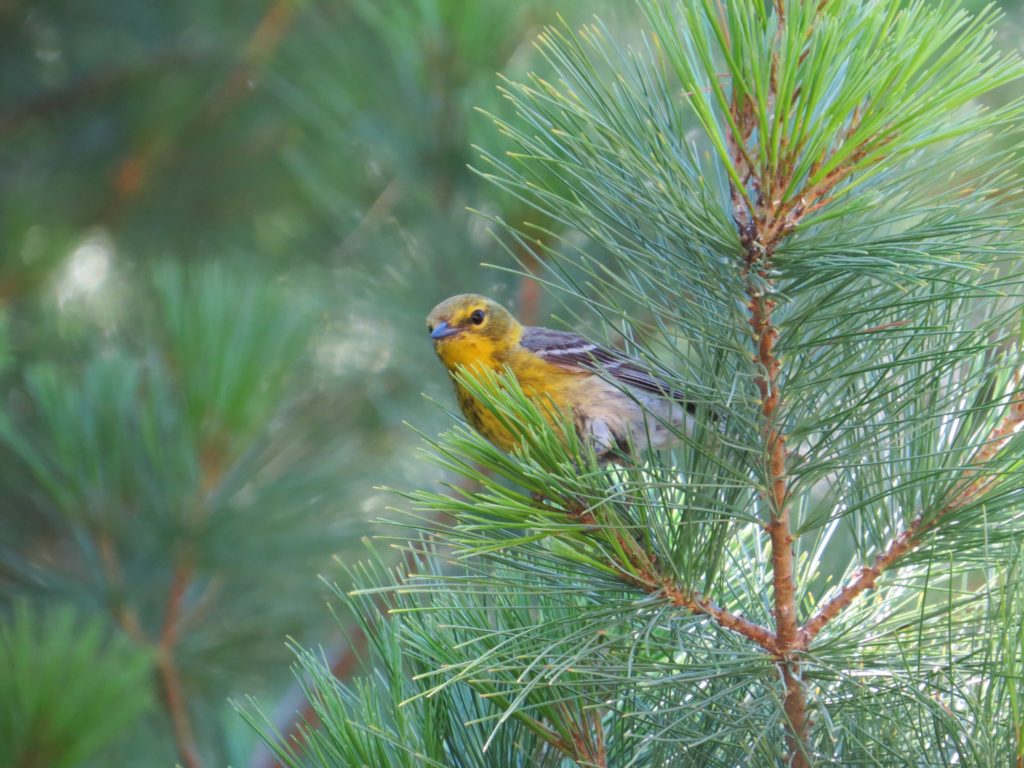
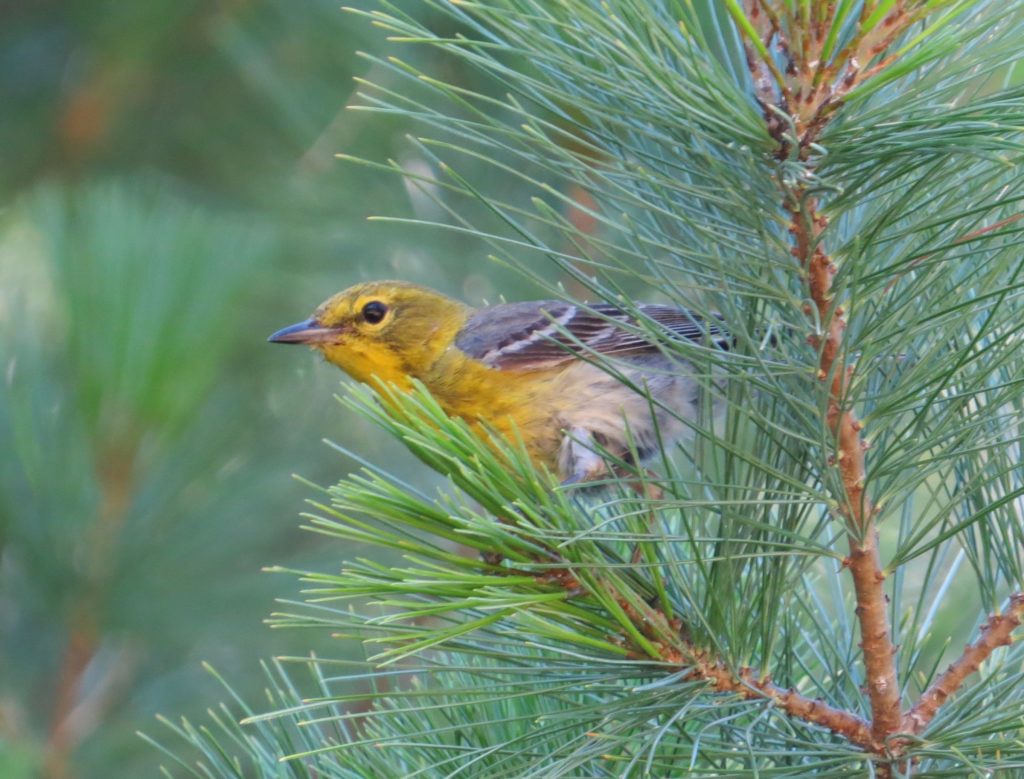
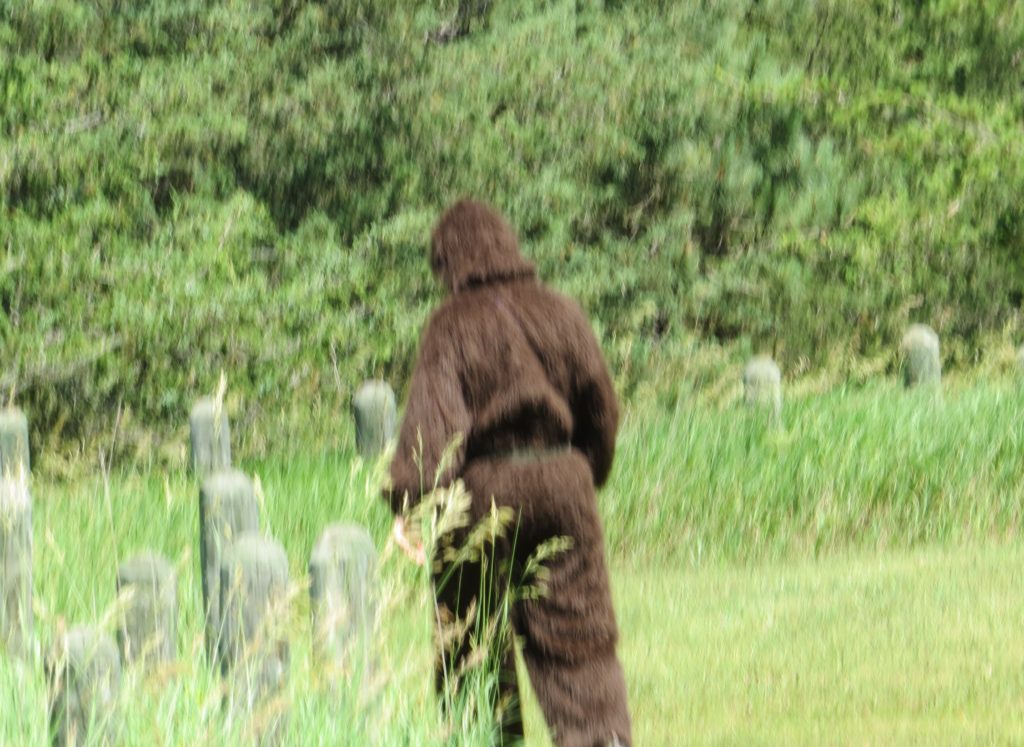
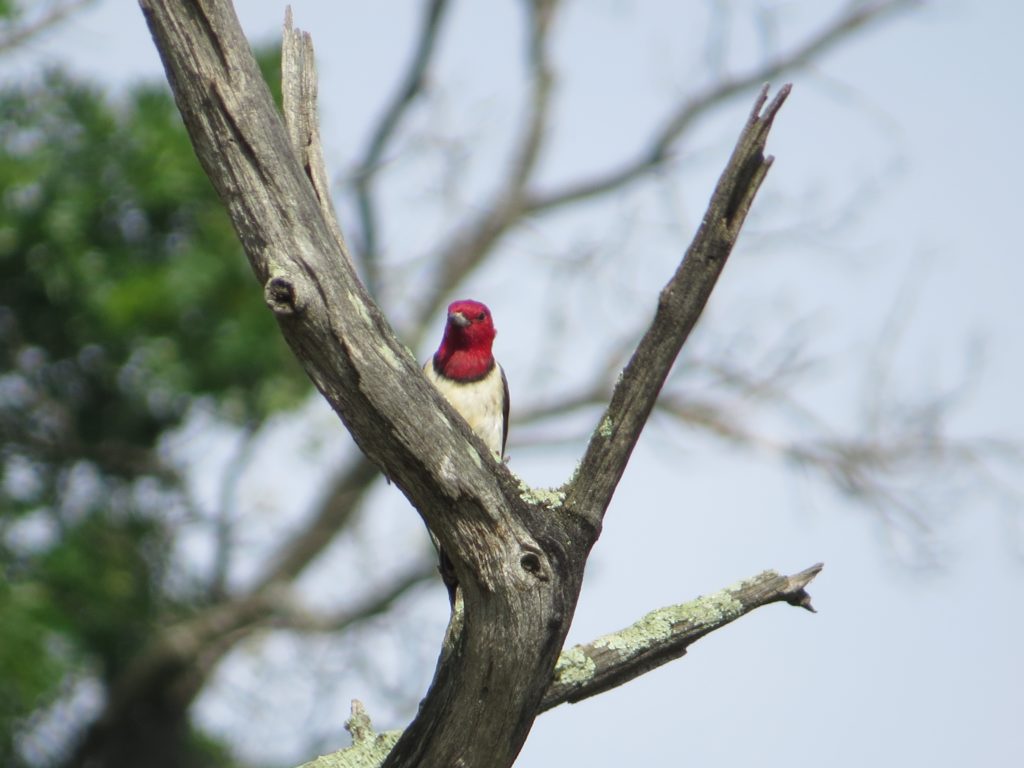
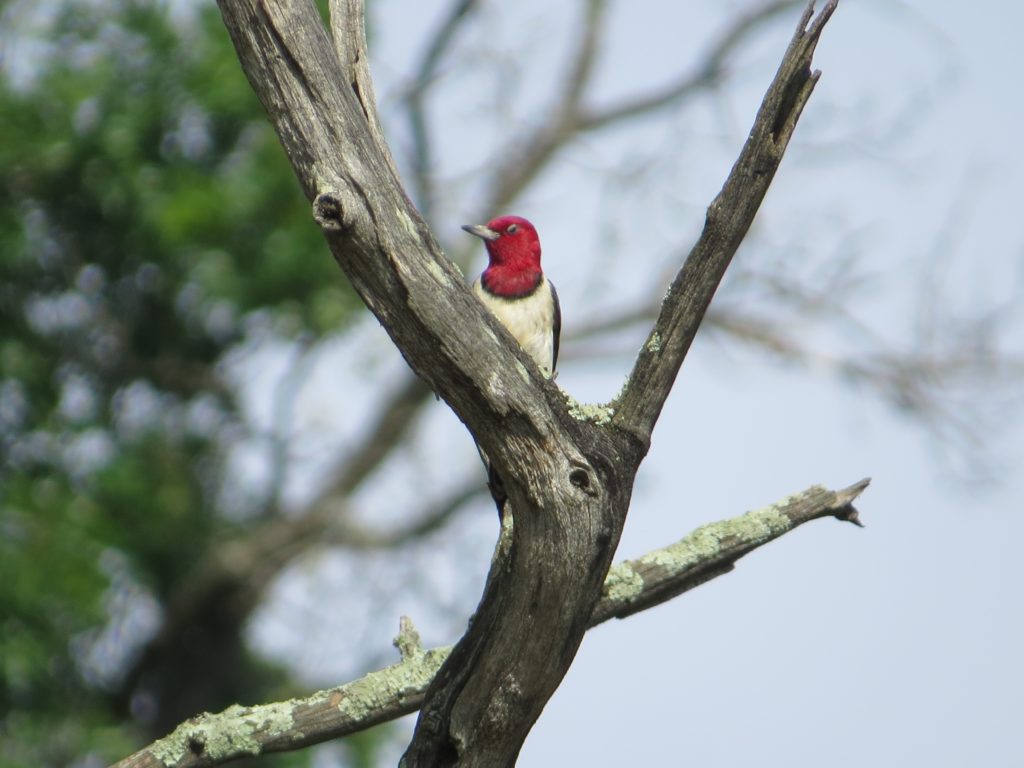 What’s this bird looking at? Probably a mate or a competitor for a mate. There were two that were involved in a seemingly endless chase, never once pausing for a good picture. At one point we saw them lock feet and fall to the ground like Eagles. It was fantastic.
What’s this bird looking at? Probably a mate or a competitor for a mate. There were two that were involved in a seemingly endless chase, never once pausing for a good picture. At one point we saw them lock feet and fall to the ground like Eagles. It was fantastic.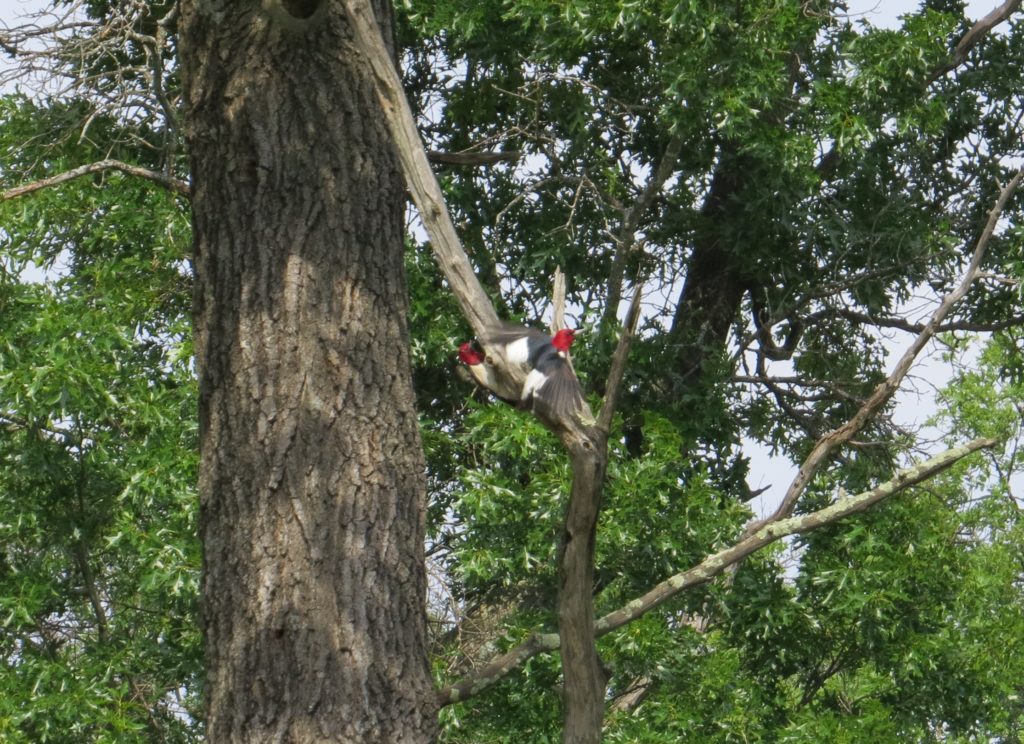 My own personal RHWO drought along with the near-threatened status of this bird made seeing this abundance of Red-headed Woodpeckers extremely thrilling. Never mind that this Woodpecker is ridiculously striking in appearance, sporting a bold, simplistic color pattern.
My own personal RHWO drought along with the near-threatened status of this bird made seeing this abundance of Red-headed Woodpeckers extremely thrilling. Never mind that this Woodpecker is ridiculously striking in appearance, sporting a bold, simplistic color pattern.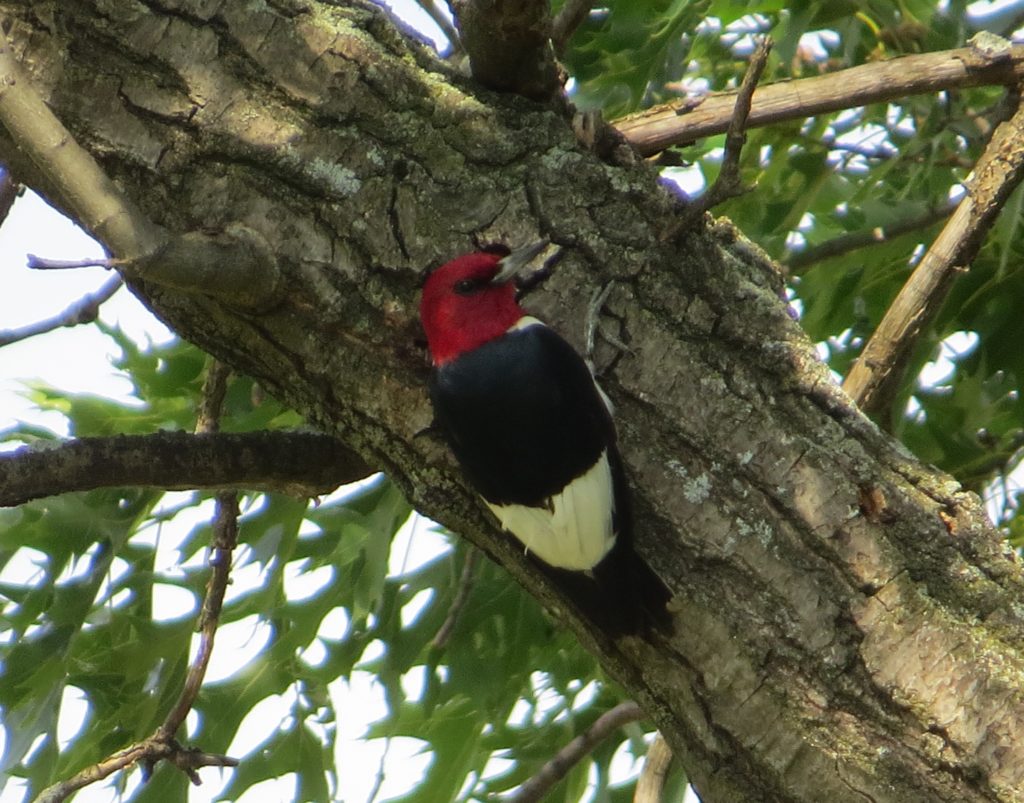
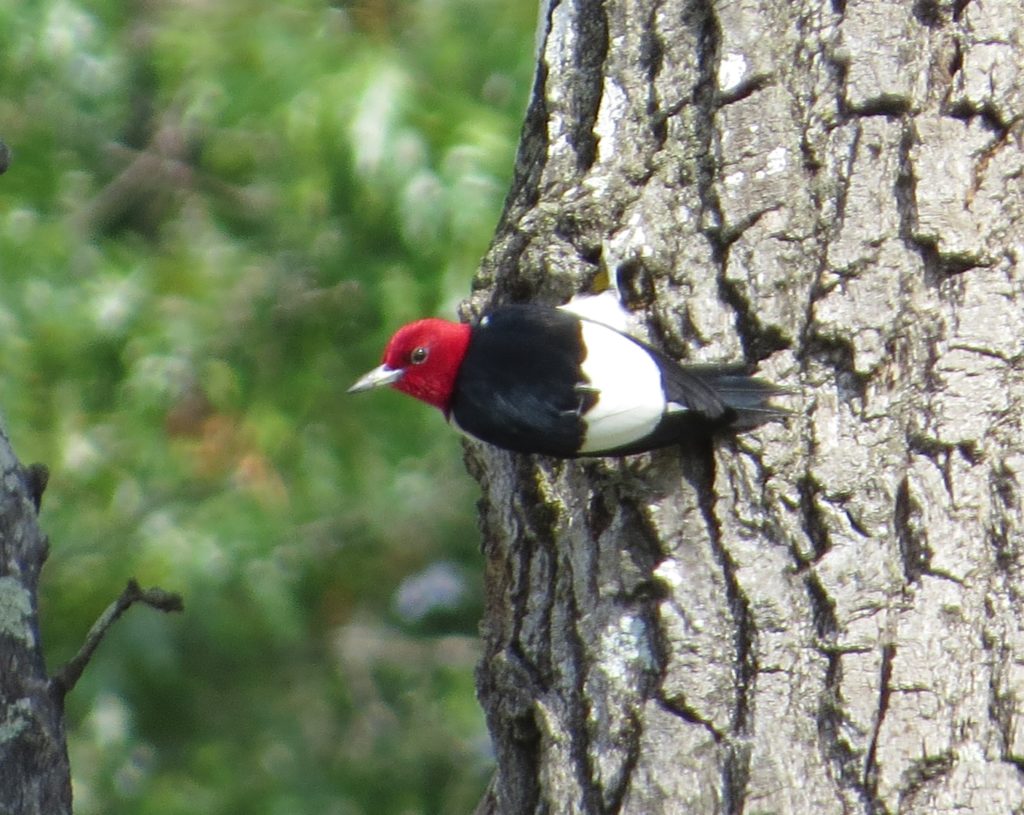 Evan enjoyed looking at all these cool Woodpeckers flying around us everywhere.
Evan enjoyed looking at all these cool Woodpeckers flying around us everywhere.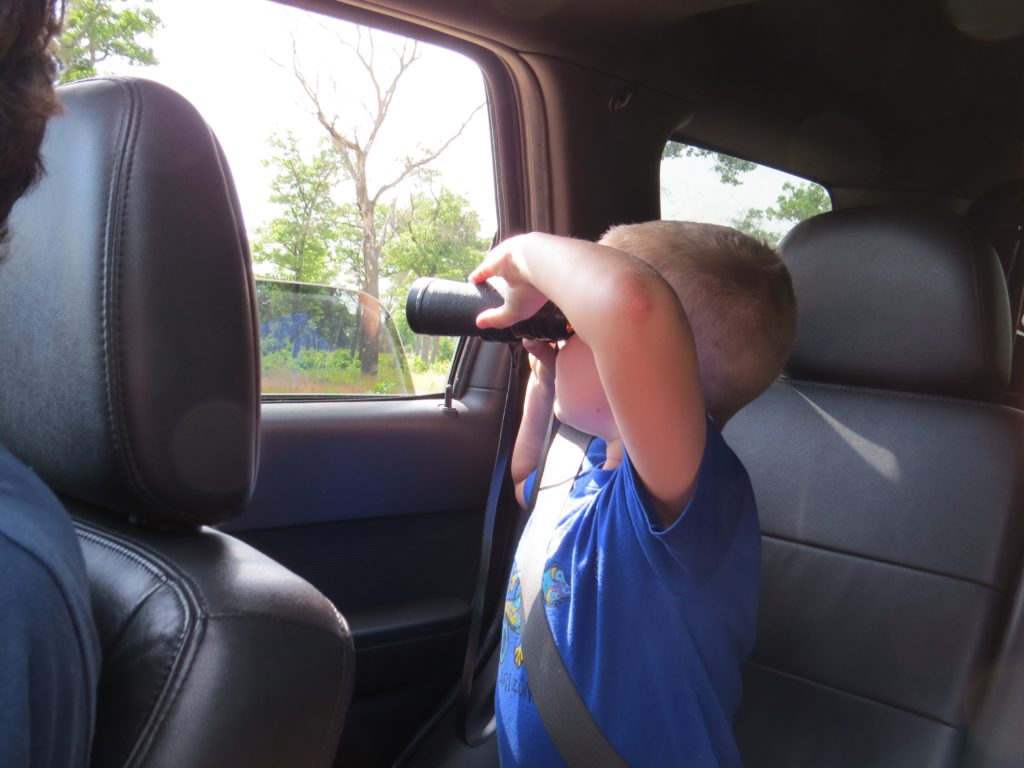 Then again, who wouldn’t?
Then again, who wouldn’t?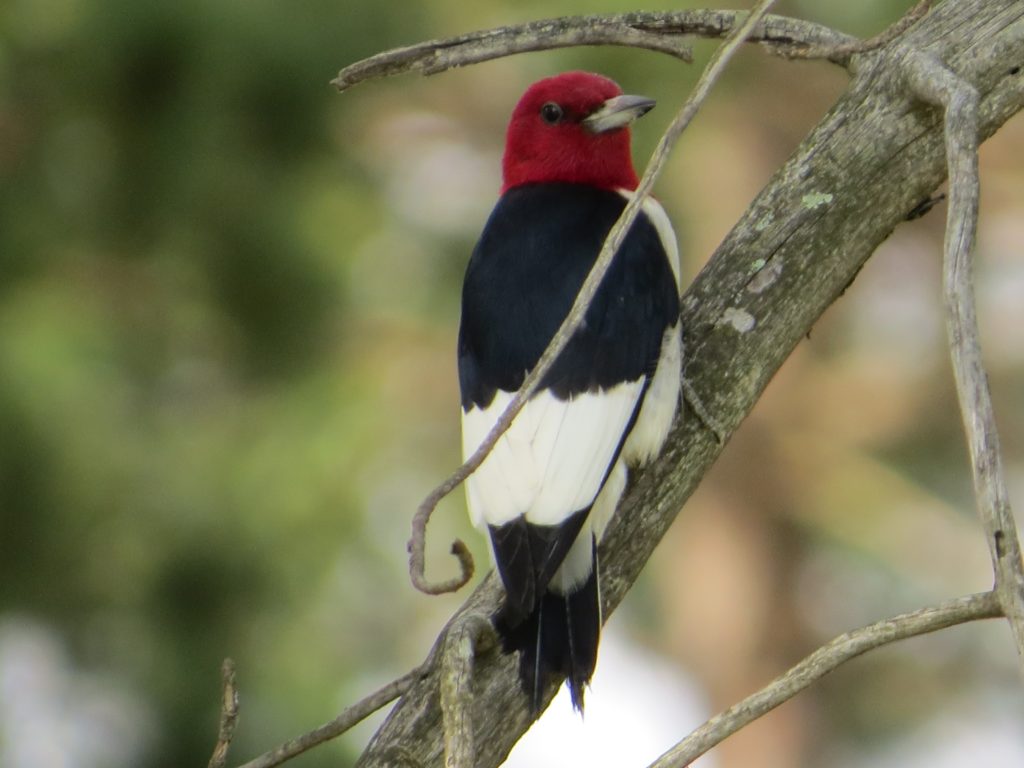 It’s unfortunate that we didn’t have more time to spend with these Woodpeckers at Necedah as other areas of Necedah required exploration before we had to break for supper, hotel check-in, and Kirtland’s scouting. But it’s good to know there is a place where one can go and see this species with ease.
It’s unfortunate that we didn’t have more time to spend with these Woodpeckers at Necedah as other areas of Necedah required exploration before we had to break for supper, hotel check-in, and Kirtland’s scouting. But it’s good to know there is a place where one can go and see this species with ease.
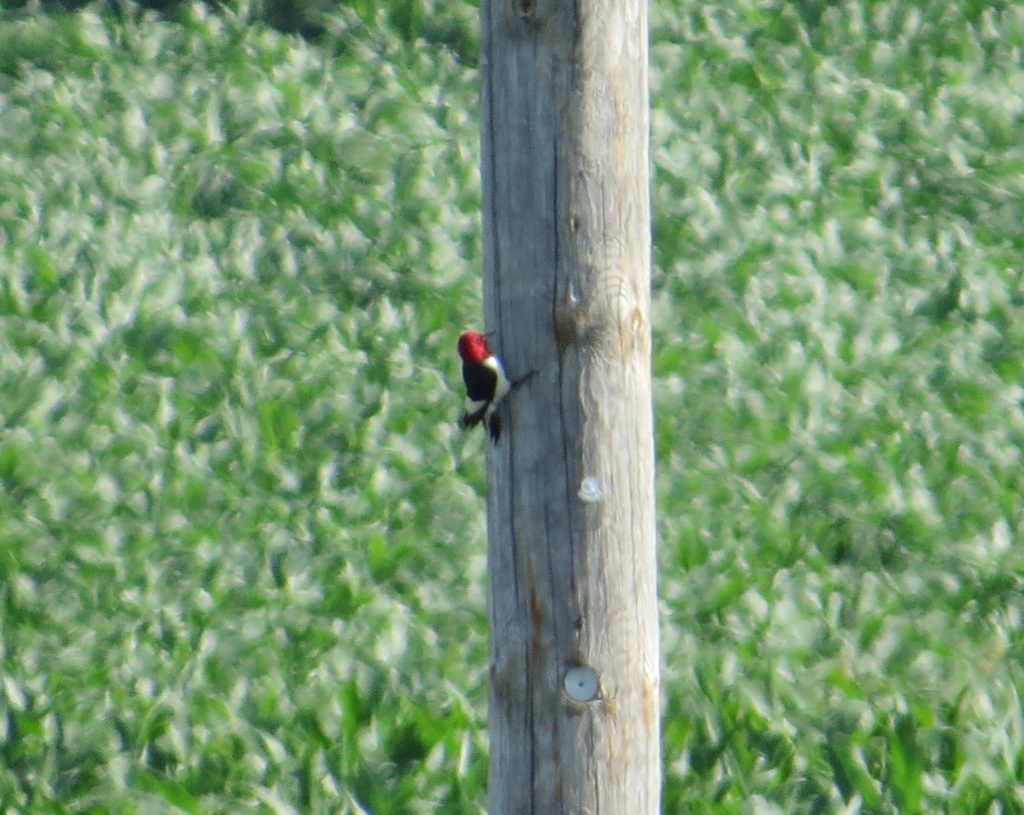
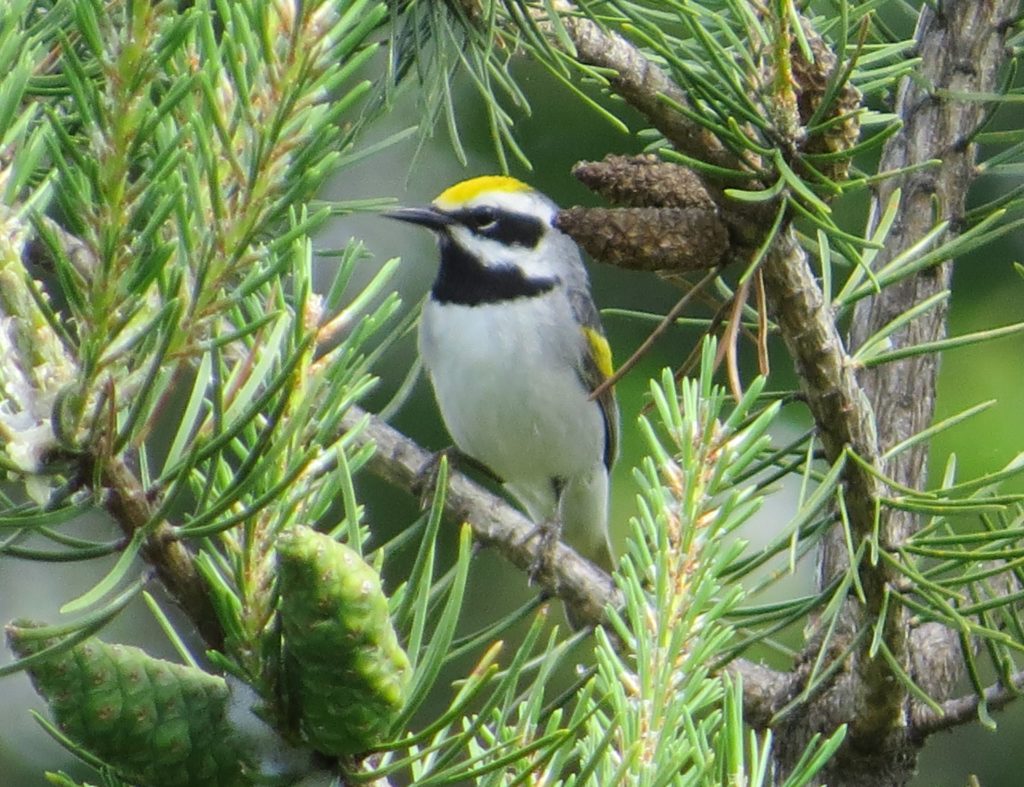 If Minnesota did not already claim (appropriately) the Common Loon as its state bird, the GWWA would make a fine choice. Minnesota plays host to roughly 50% of the world’s entire breeding population of this Warbler species. Wisconsin and Ontario are the other major stakeholders in rearing these birds. Maybe if most Wisconsinites knew this, they’d hold a referendum to denounce the Robin as their state bird and choose this Warbler instead.
If Minnesota did not already claim (appropriately) the Common Loon as its state bird, the GWWA would make a fine choice. Minnesota plays host to roughly 50% of the world’s entire breeding population of this Warbler species. Wisconsin and Ontario are the other major stakeholders in rearing these birds. Maybe if most Wisconsinites knew this, they’d hold a referendum to denounce the Robin as their state bird and choose this Warbler instead.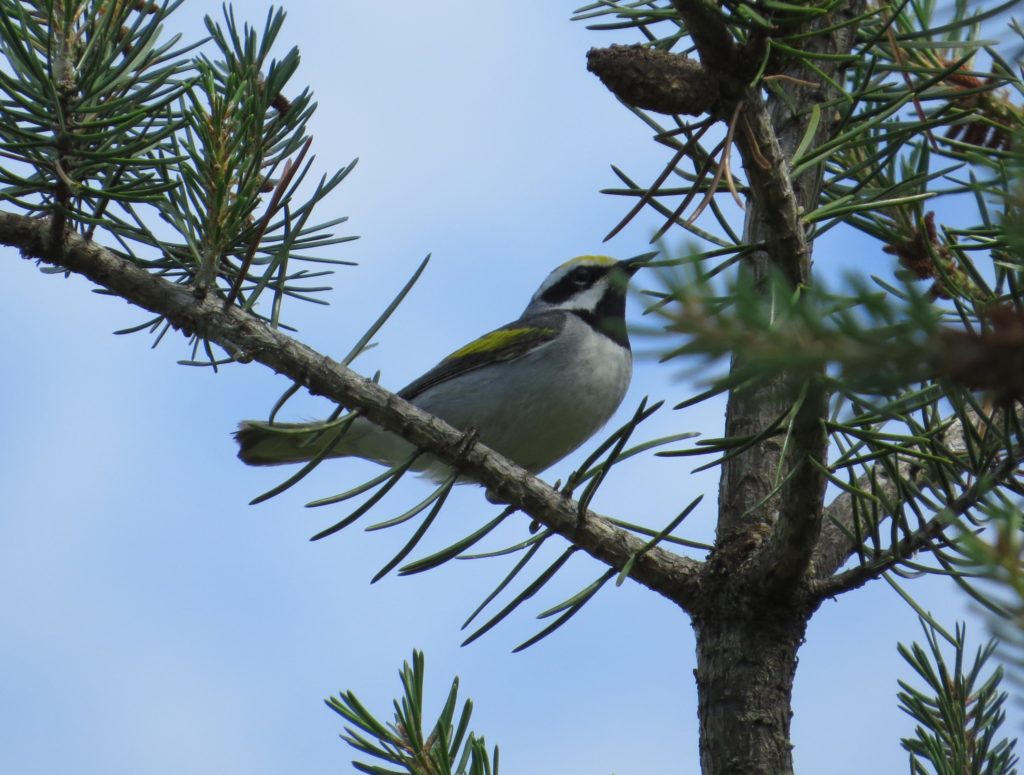 The Golden-wing’s preferred habitat is shrubby edges along wetlands and young forests. While the breeding population has remained stable in Minnesota over the last 45 years, this species has suffered a 60% population loss over that same time in the rest of its breeding range in North America. Even though Minnesota contains only 10% of the GWWA’s breeding range, we host nearly half of all the birds of this species. That puts an emphasis on just how much human development of wetlands and shrubby areas in other parts of the northeast has impacted this bird.
The Golden-wing’s preferred habitat is shrubby edges along wetlands and young forests. While the breeding population has remained stable in Minnesota over the last 45 years, this species has suffered a 60% population loss over that same time in the rest of its breeding range in North America. Even though Minnesota contains only 10% of the GWWA’s breeding range, we host nearly half of all the birds of this species. That puts an emphasis on just how much human development of wetlands and shrubby areas in other parts of the northeast has impacted this bird.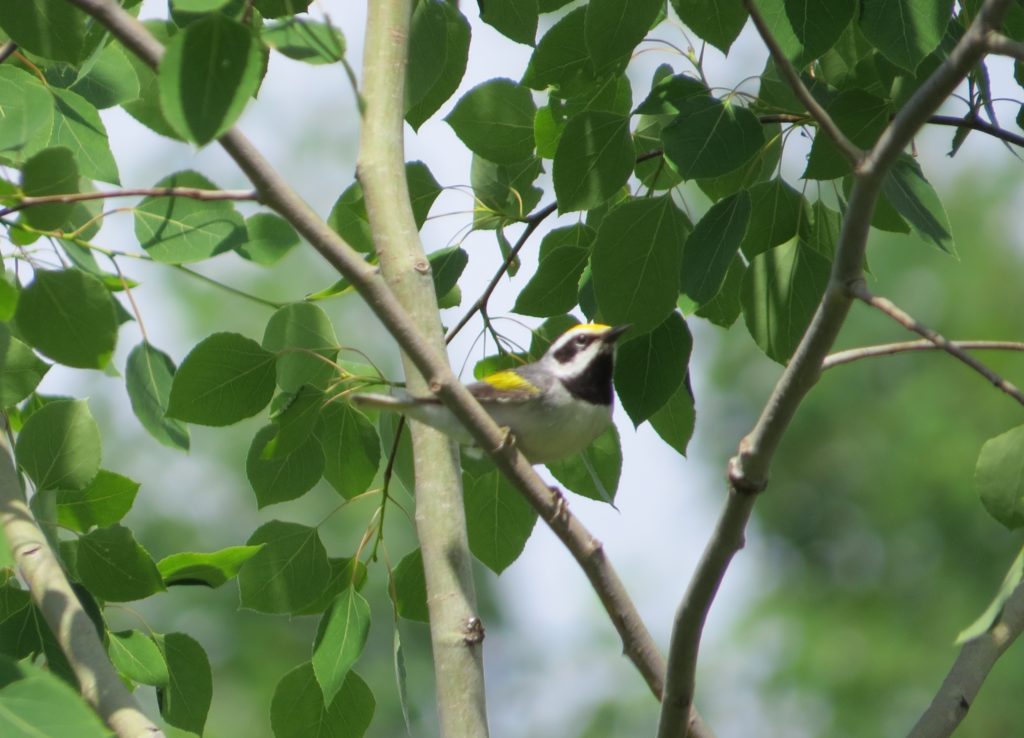 Besides human activity threatening this Warbler, the closely related Blue-winged Warbler is expanding its range in Minnesota. This is problematic because the more dominant Blue-wings prefer the same type of habitat.
Besides human activity threatening this Warbler, the closely related Blue-winged Warbler is expanding its range in Minnesota. This is problematic because the more dominant Blue-wings prefer the same type of habitat.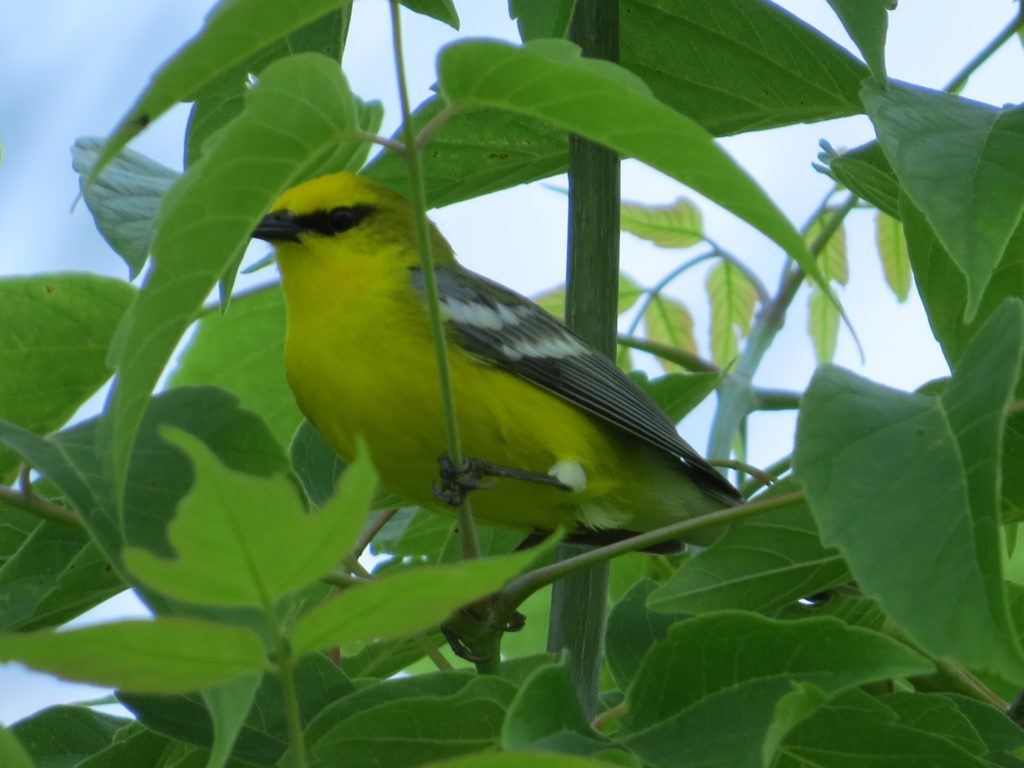 And when the Blue-wings aren’t kicking out the Golden-wings, they are hybridizing with them. I have yet to see one of the two main hybrids.
And when the Blue-wings aren’t kicking out the Golden-wings, they are hybridizing with them. I have yet to see one of the two main hybrids.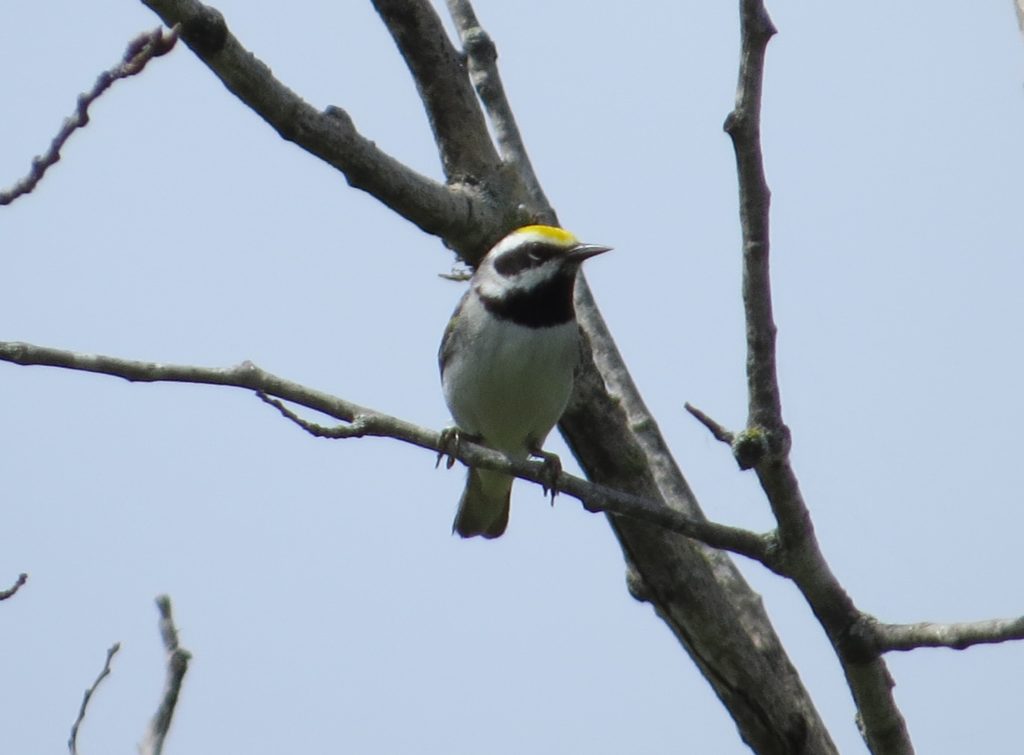 Like the Cerulean Warbler, the Golden-winged Warbler also winters in Central and South America, thriving in shade-grown coffee plantations. Again, another reminder to drink bird-friendly coffee. This beautiful home-grown bird is truly a treasure that needs all the help it can get.
Like the Cerulean Warbler, the Golden-winged Warbler also winters in Central and South America, thriving in shade-grown coffee plantations. Again, another reminder to drink bird-friendly coffee. This beautiful home-grown bird is truly a treasure that needs all the help it can get.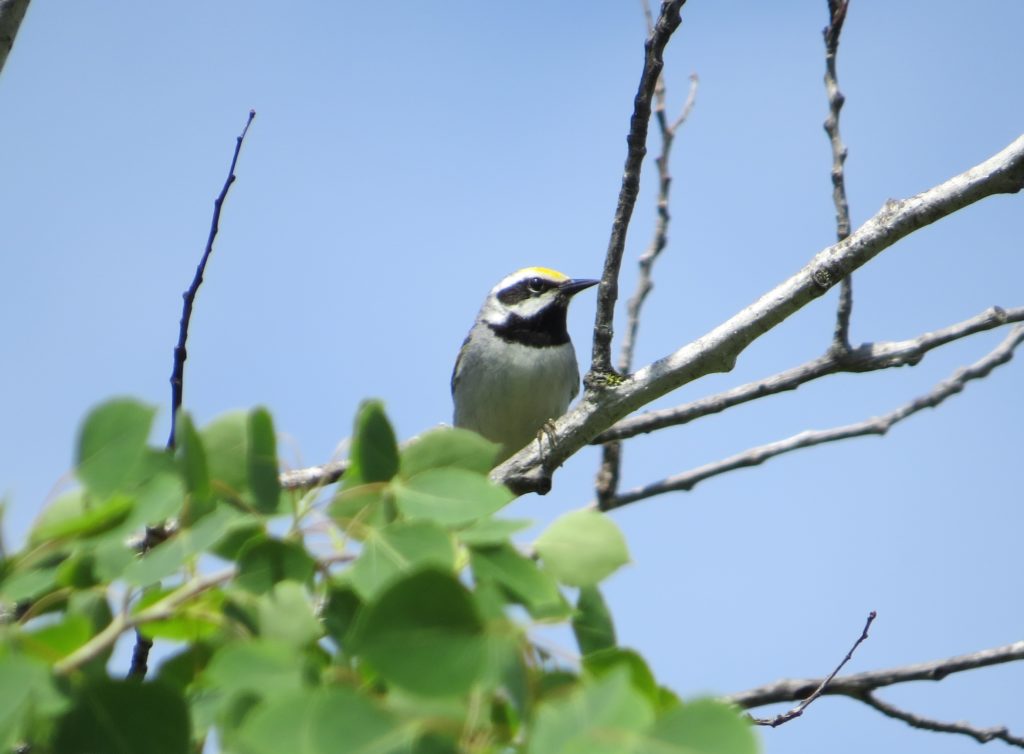 Knowing how fragile a species is makes you appreciate a sighting like ours all the more. Hopefully the Golden-winged Warbler has a bright future.
Knowing how fragile a species is makes you appreciate a sighting like ours all the more. Hopefully the Golden-winged Warbler has a bright future.